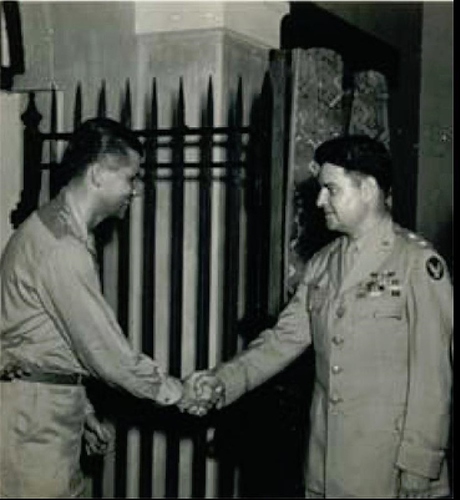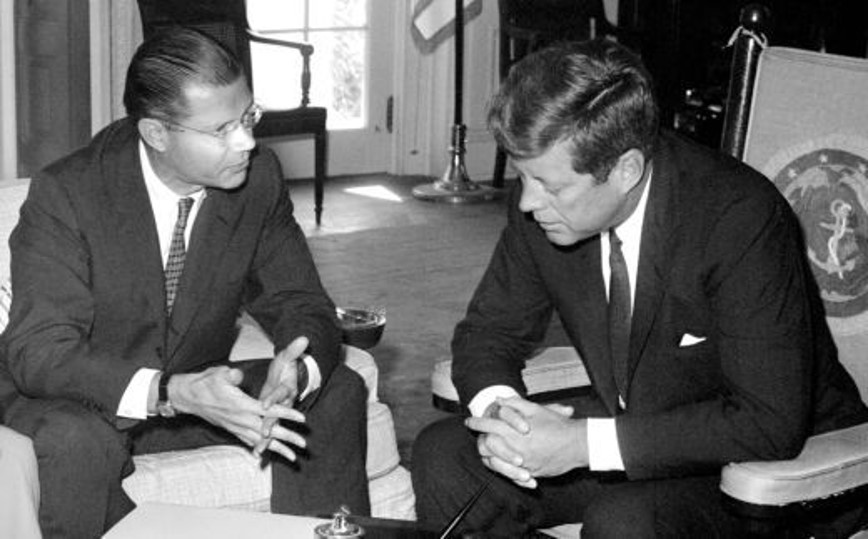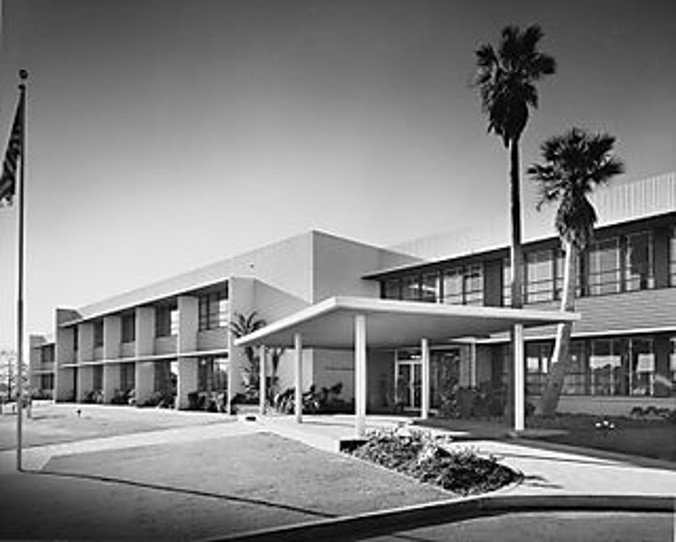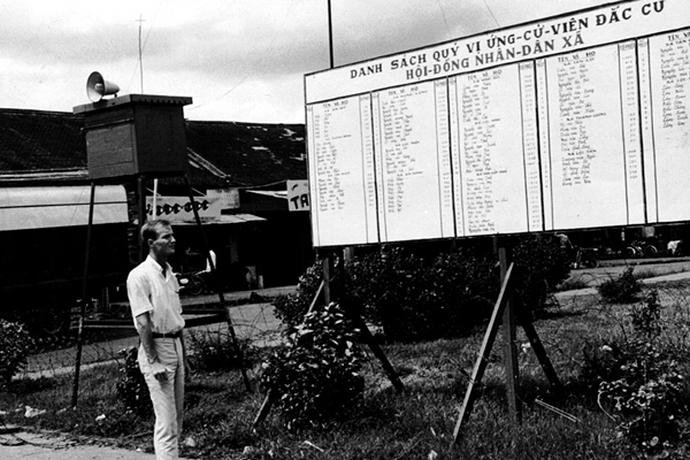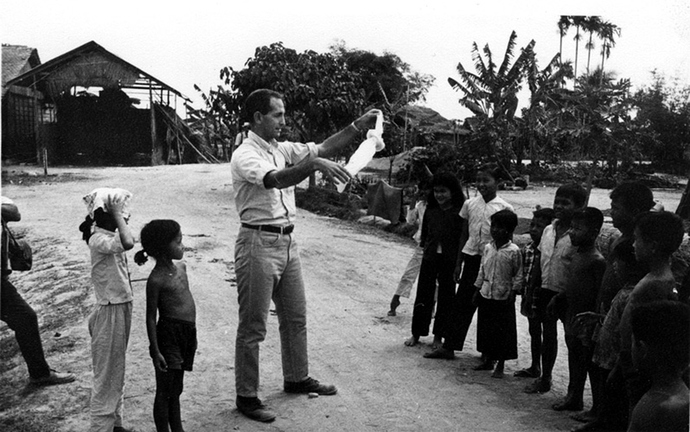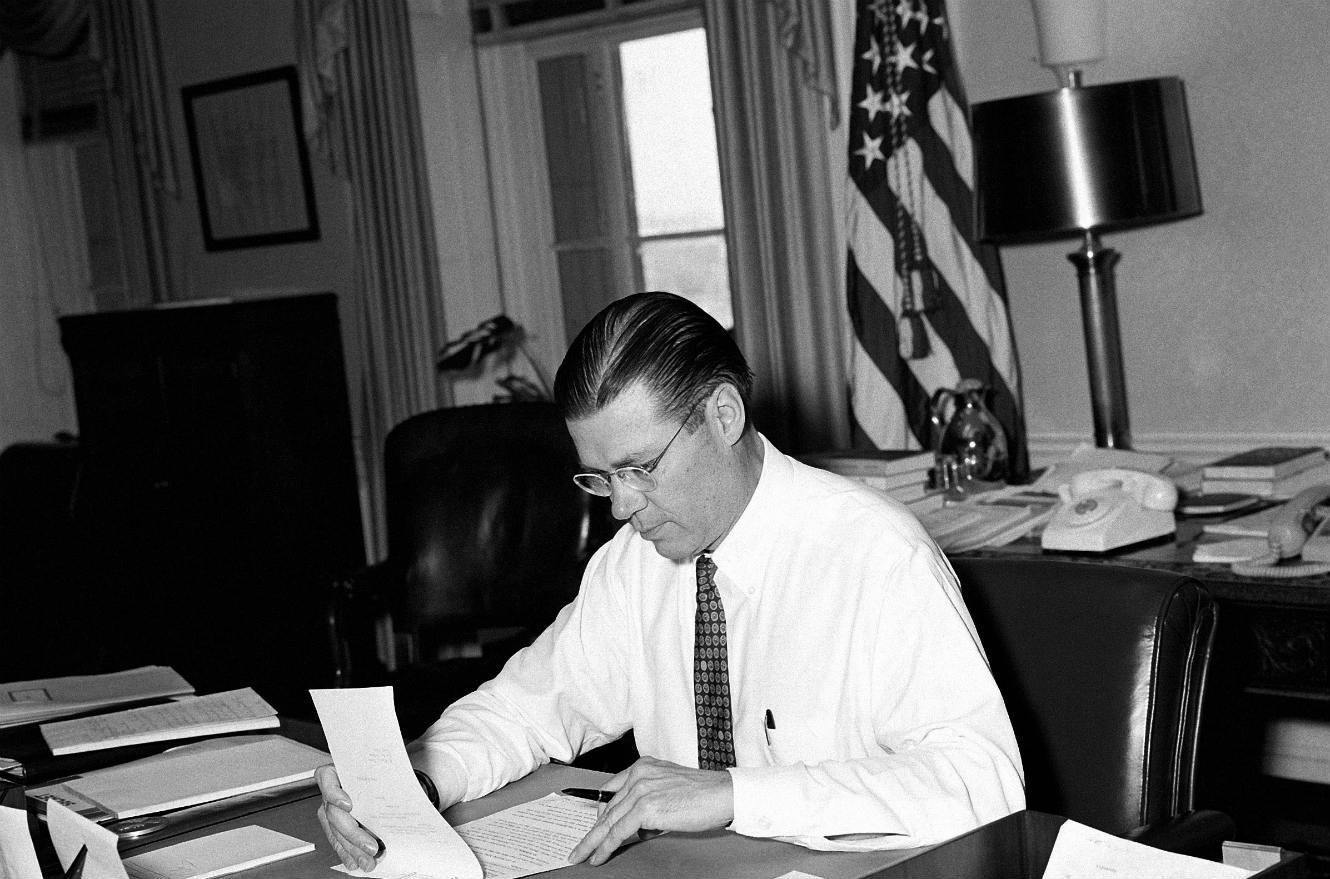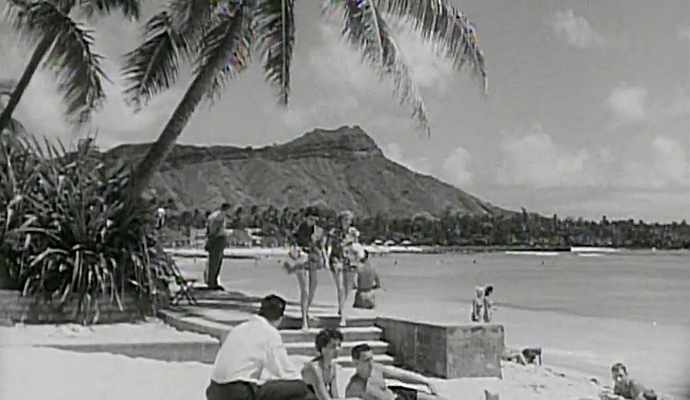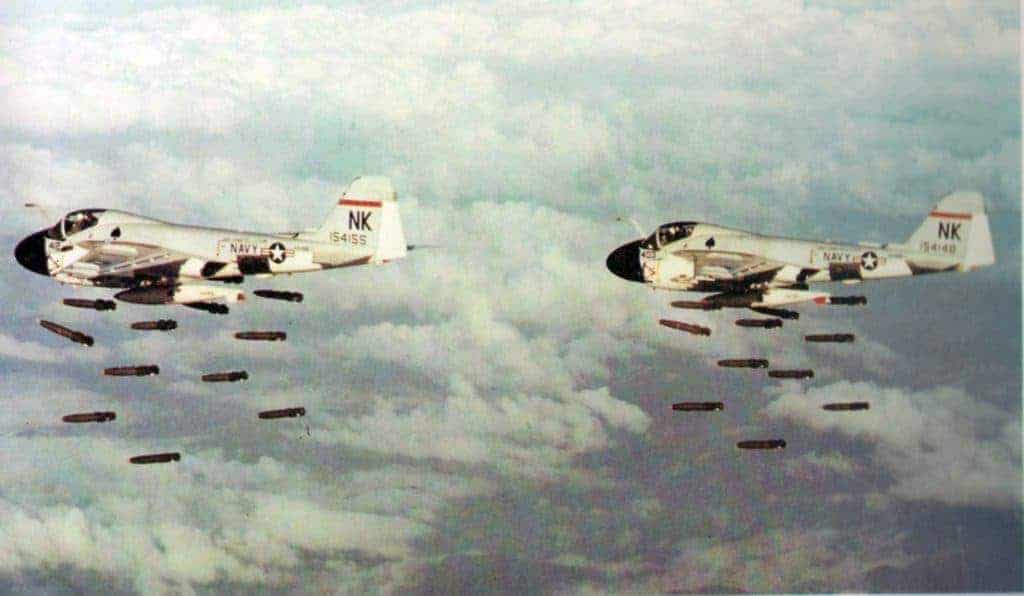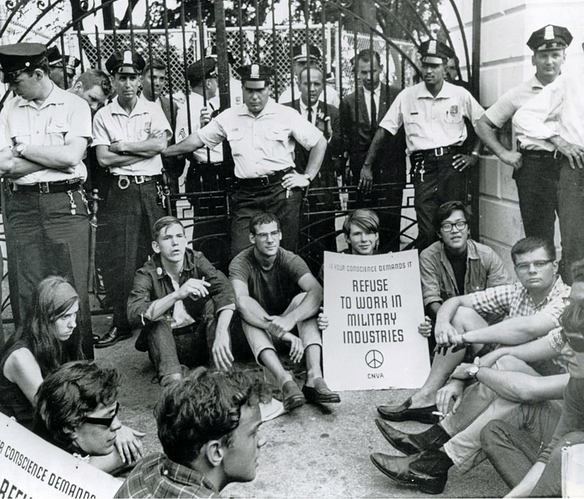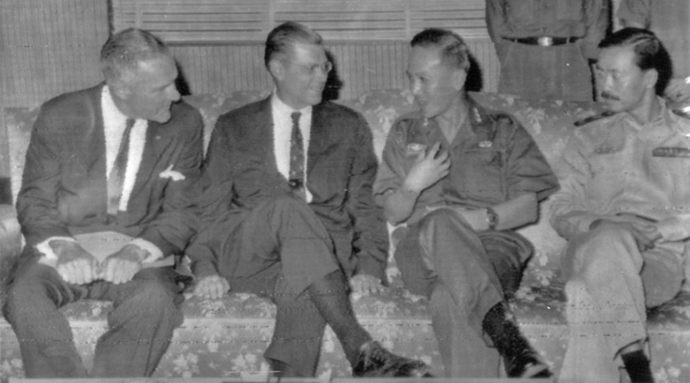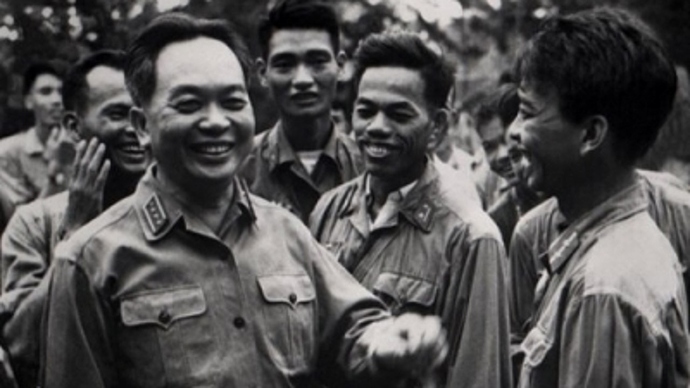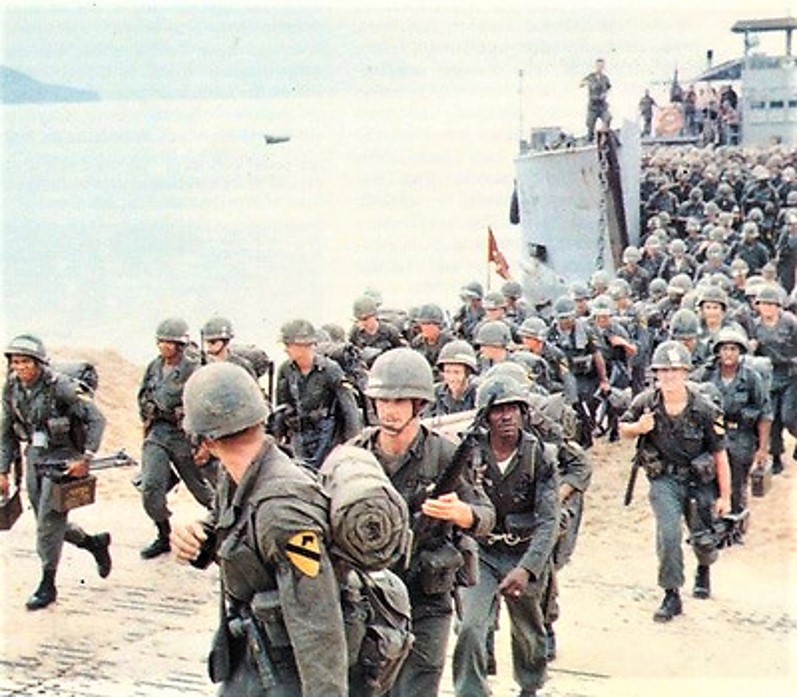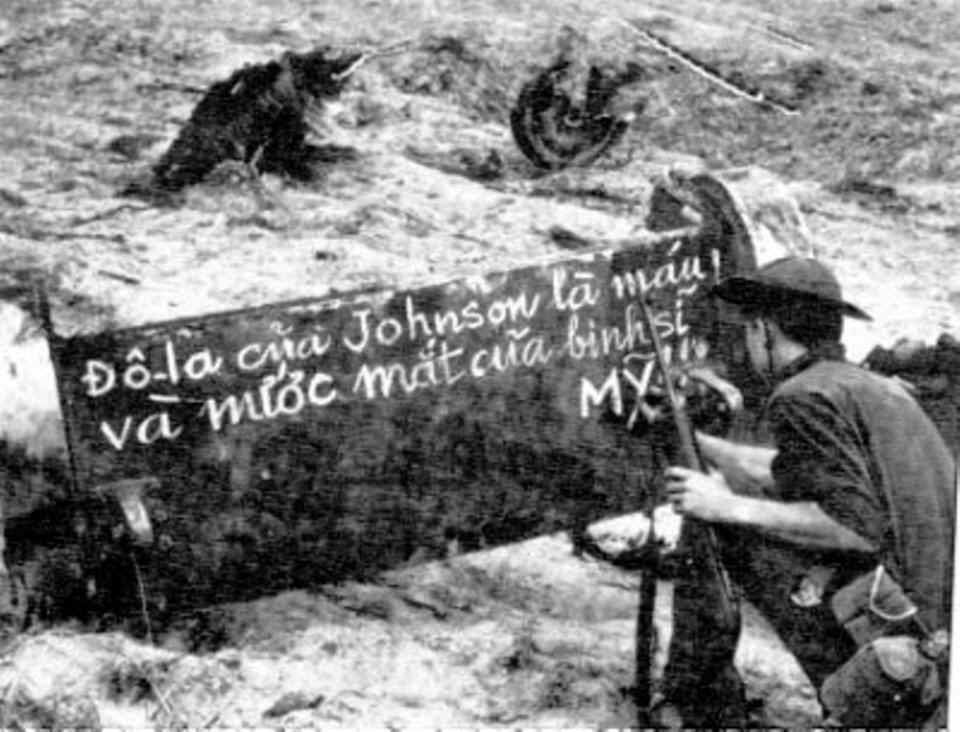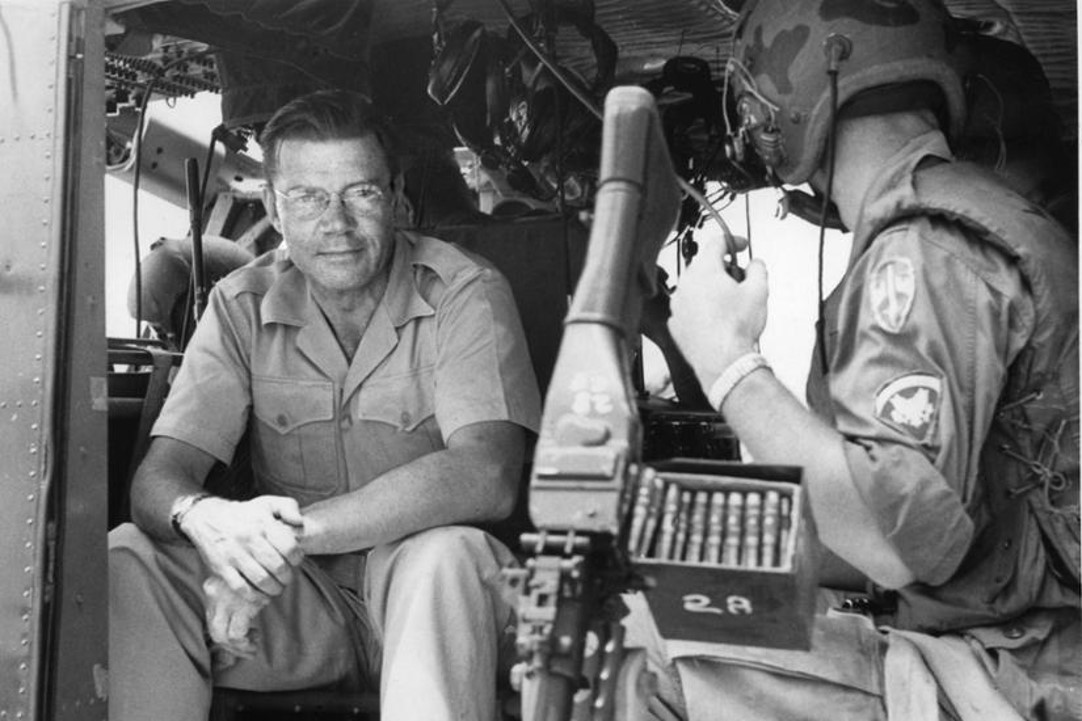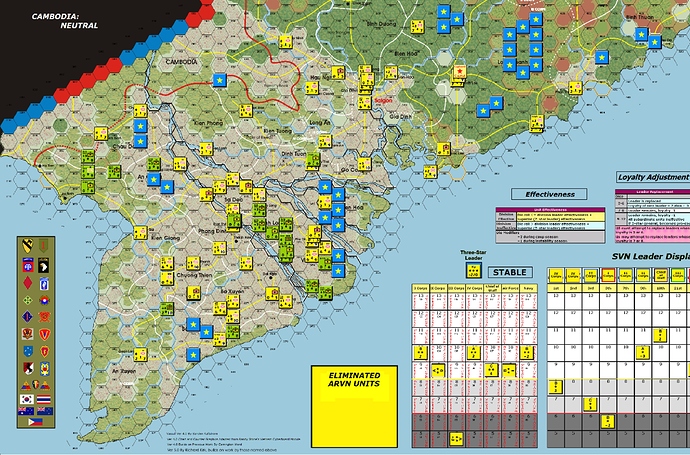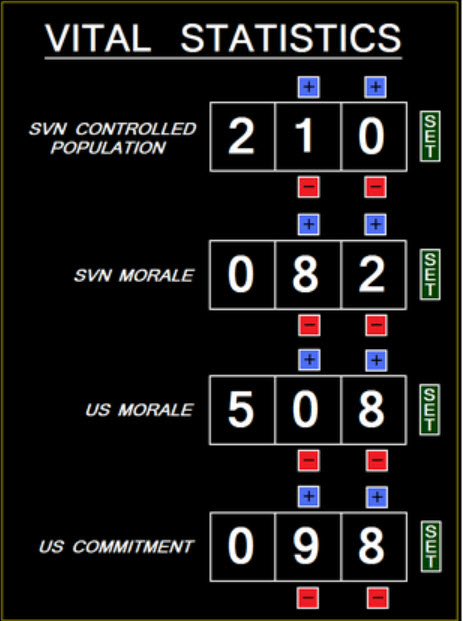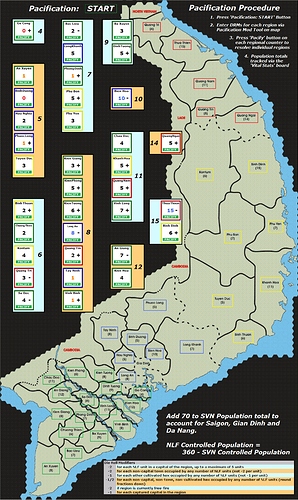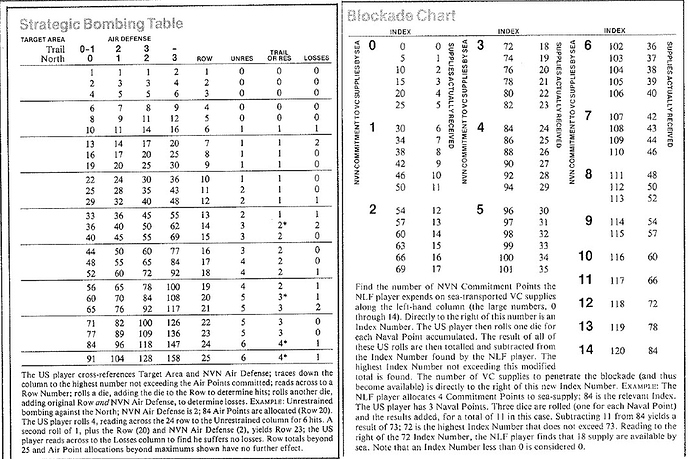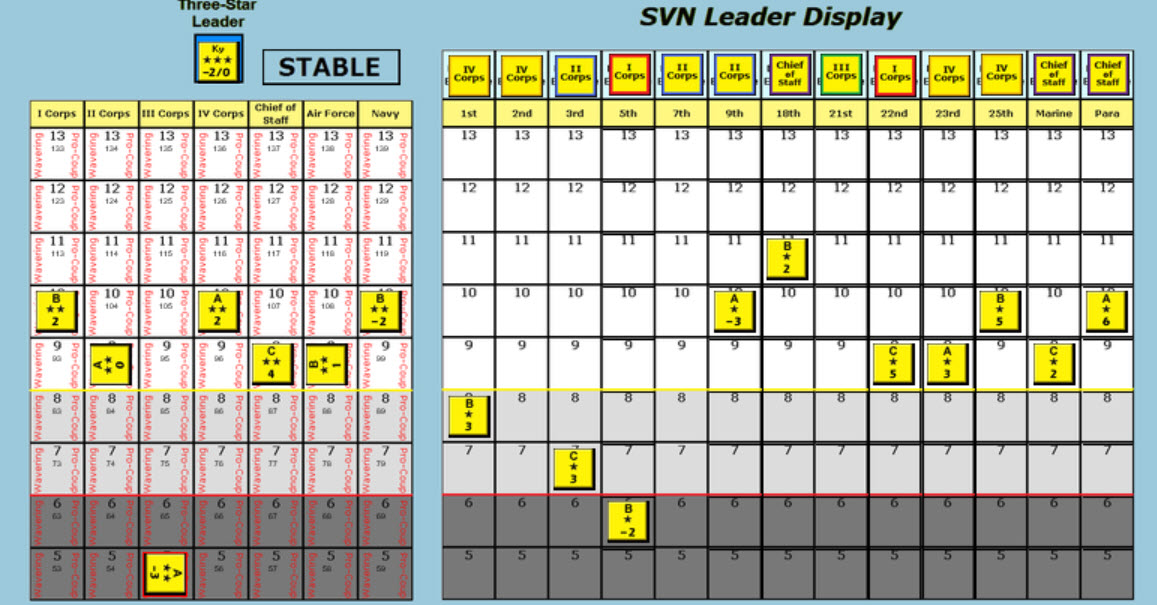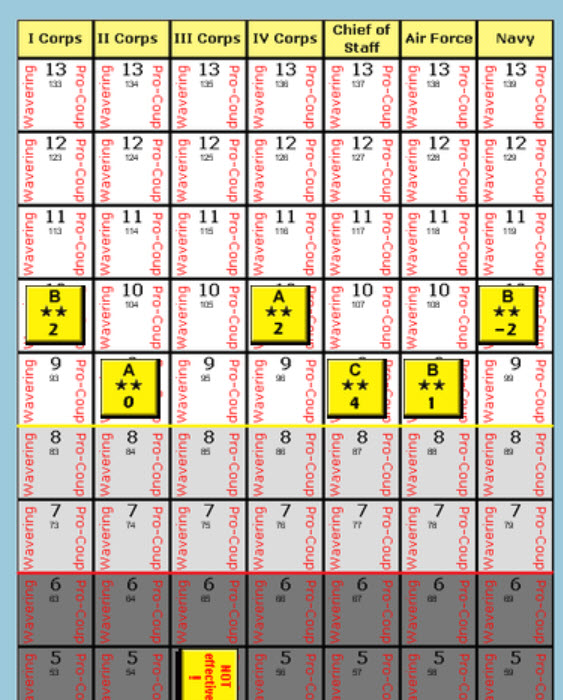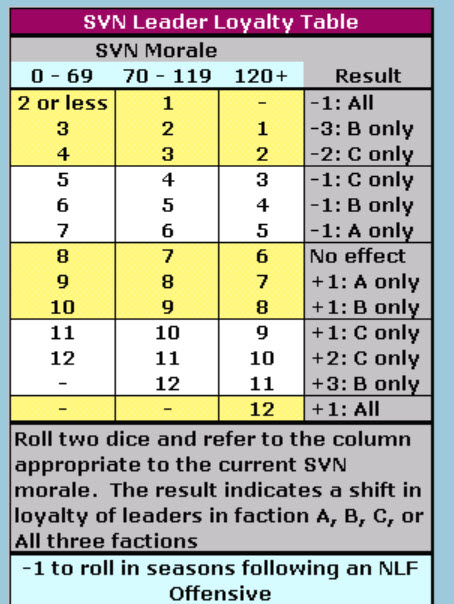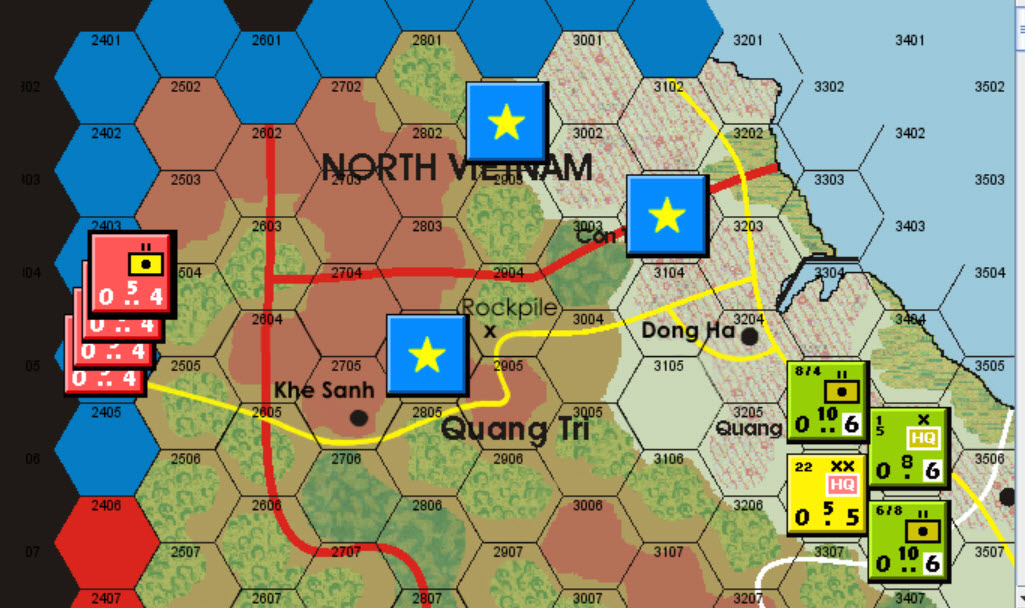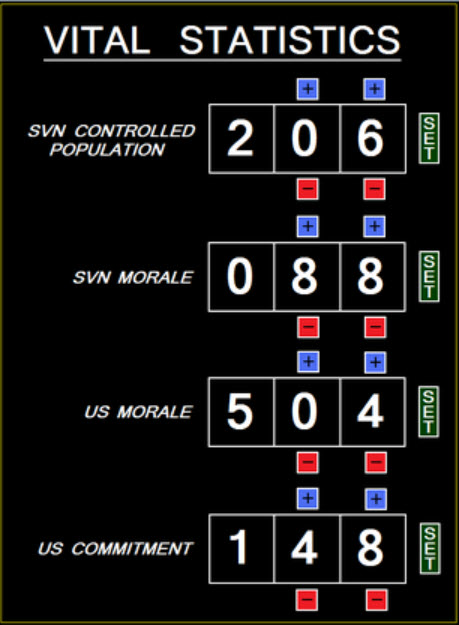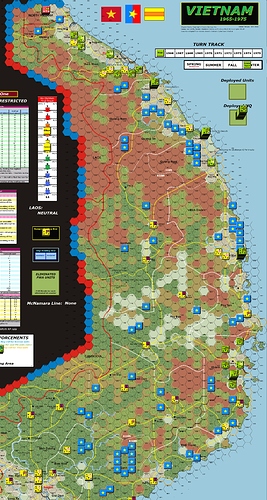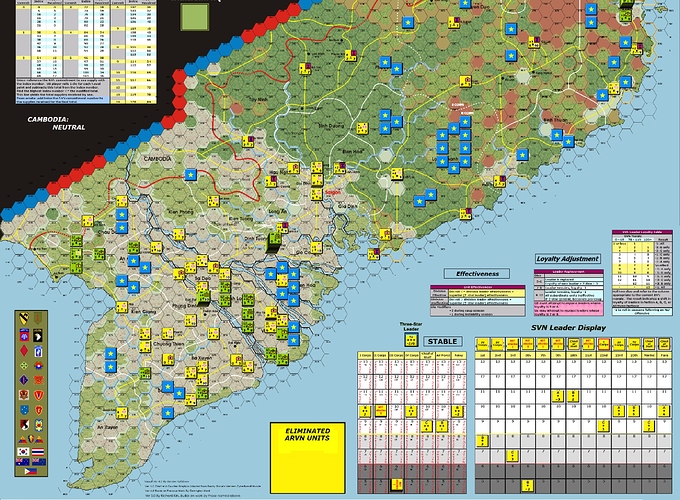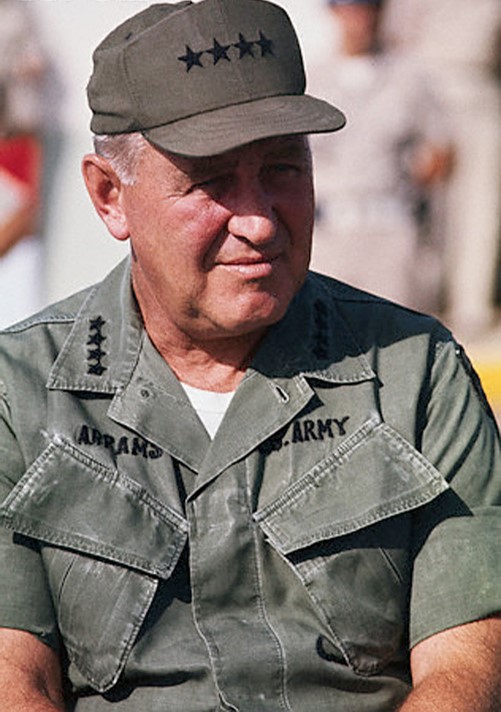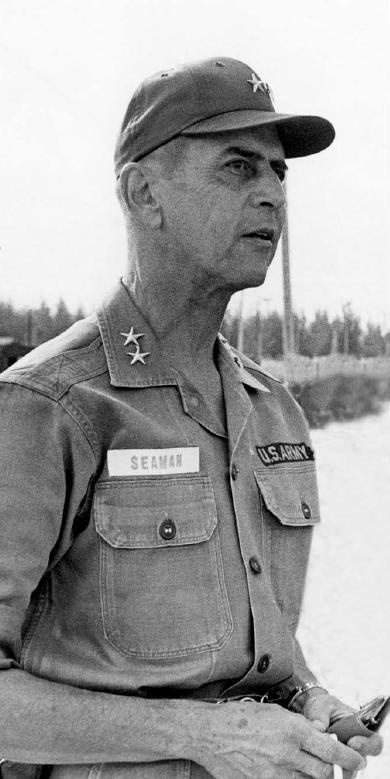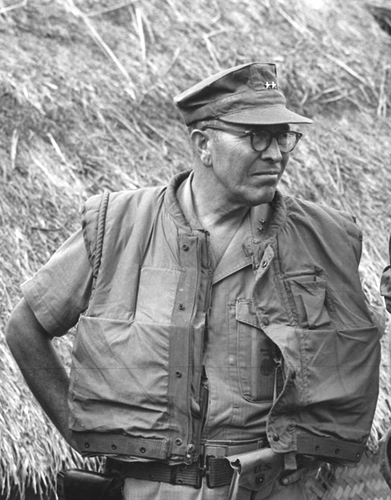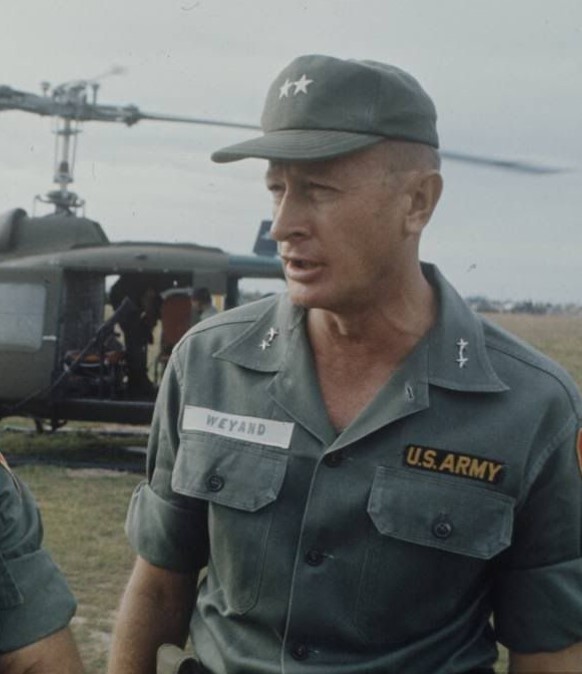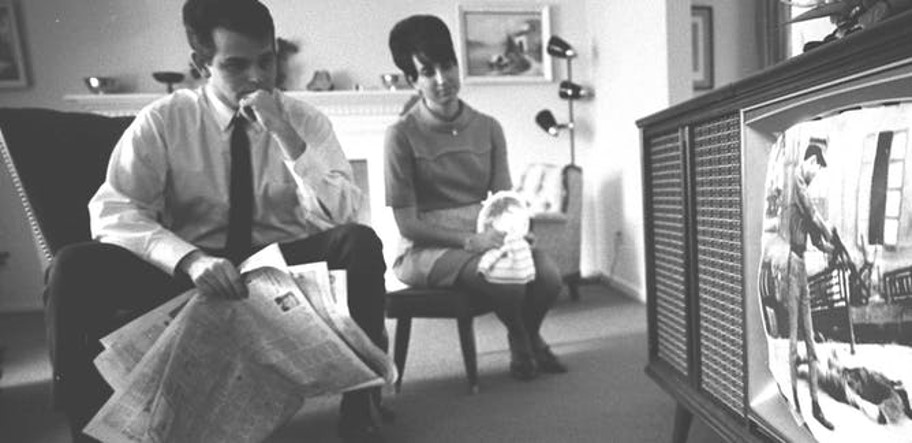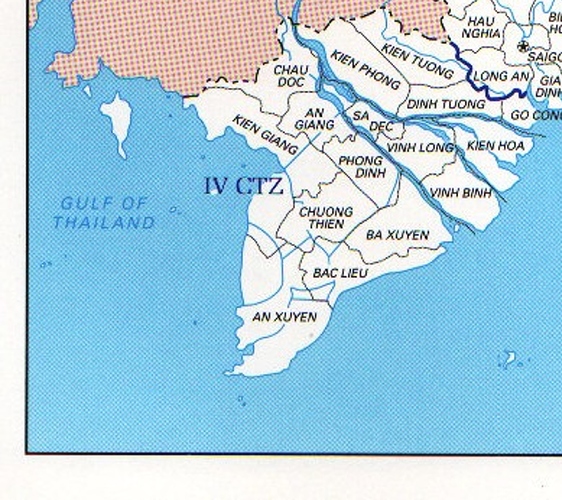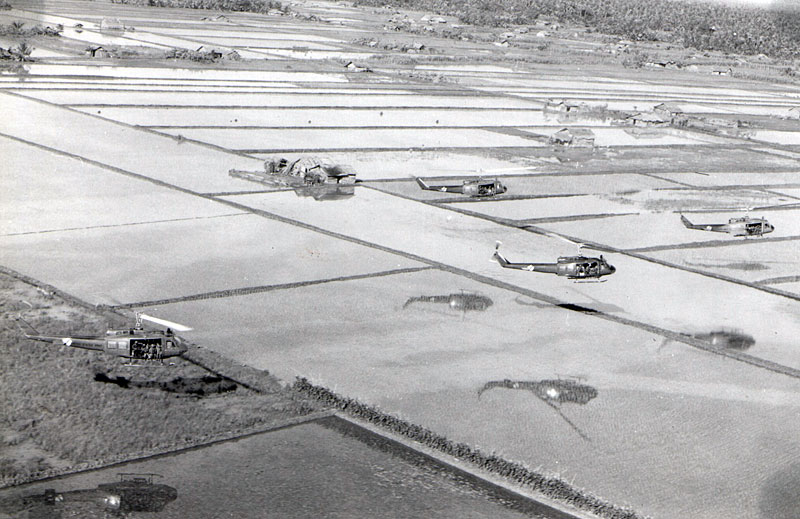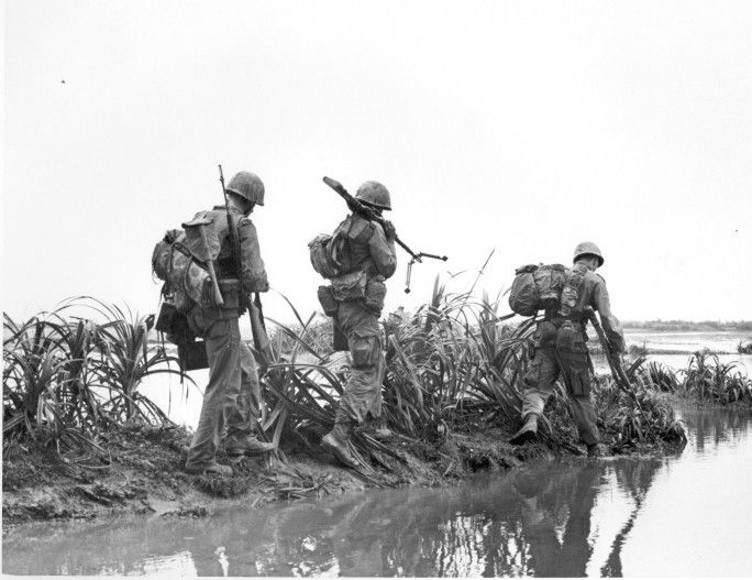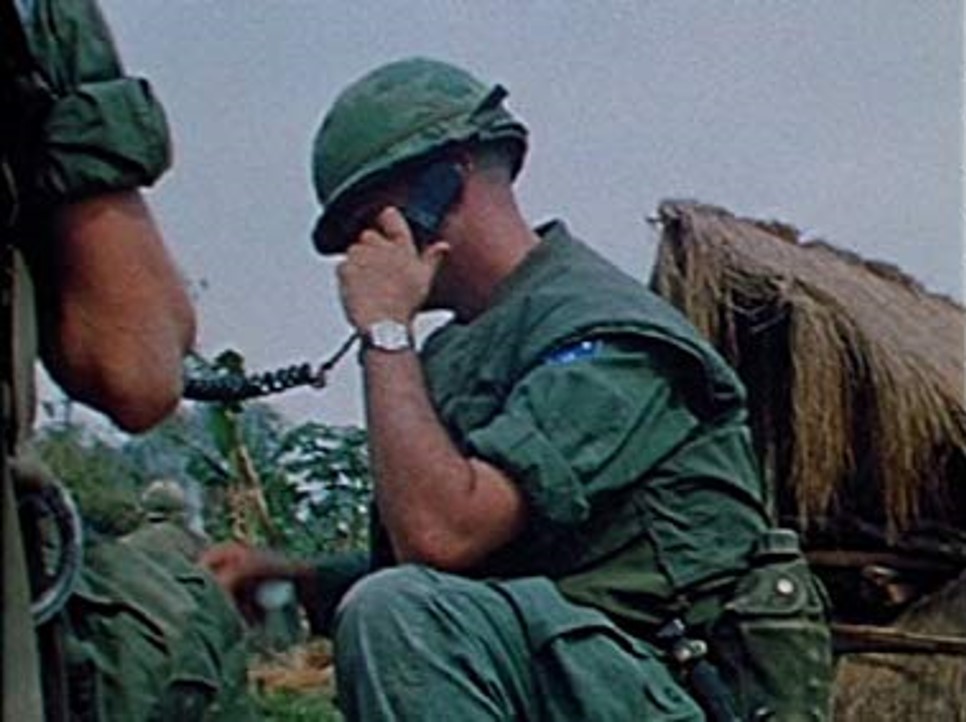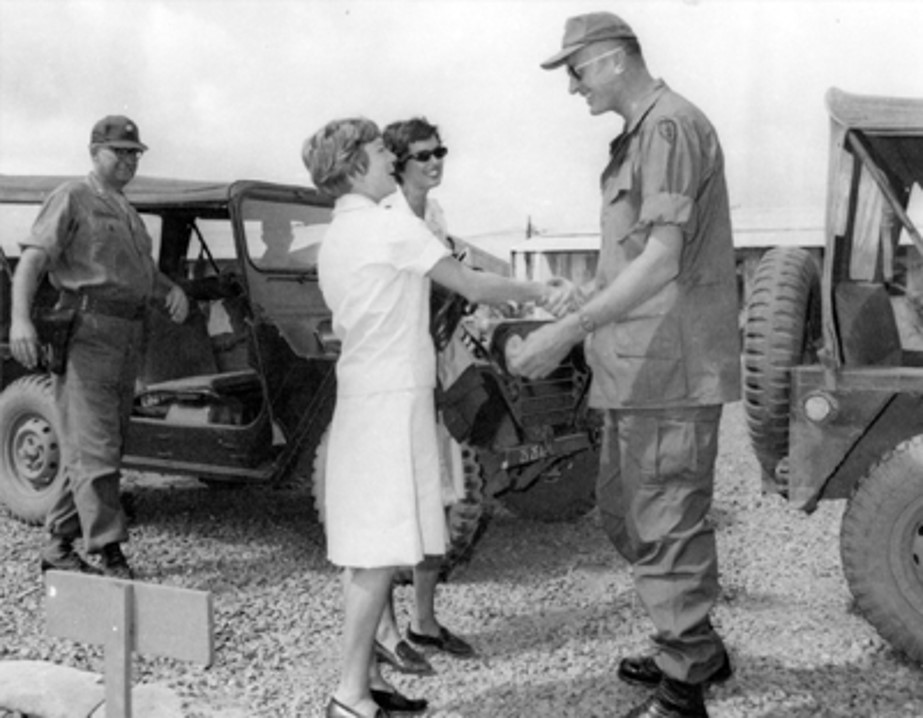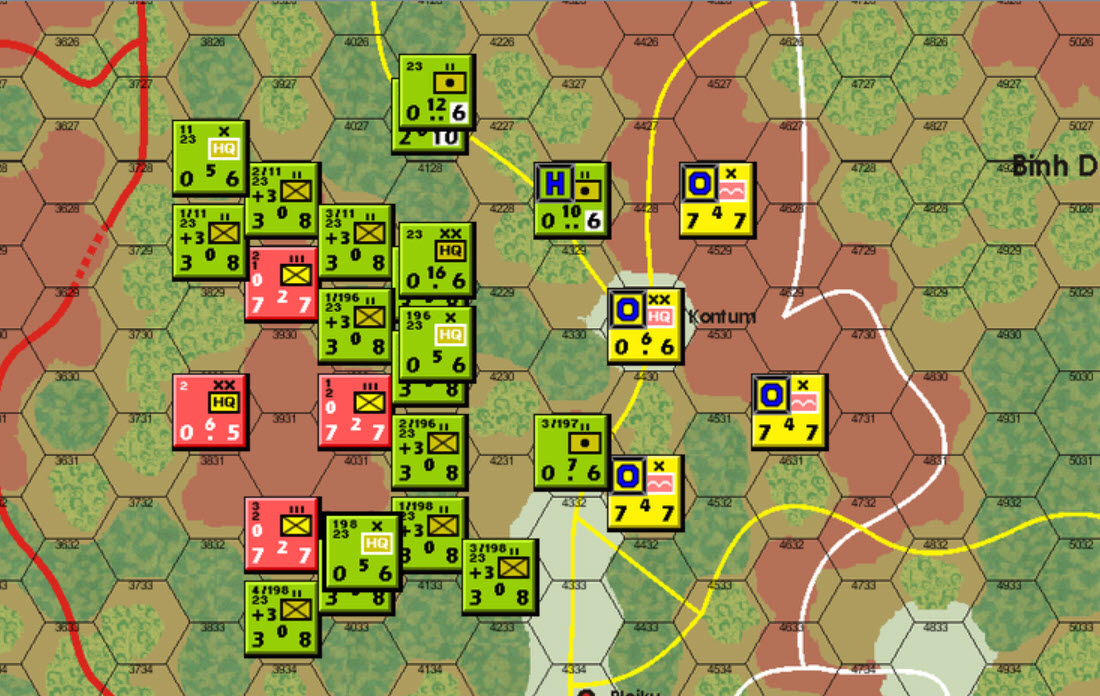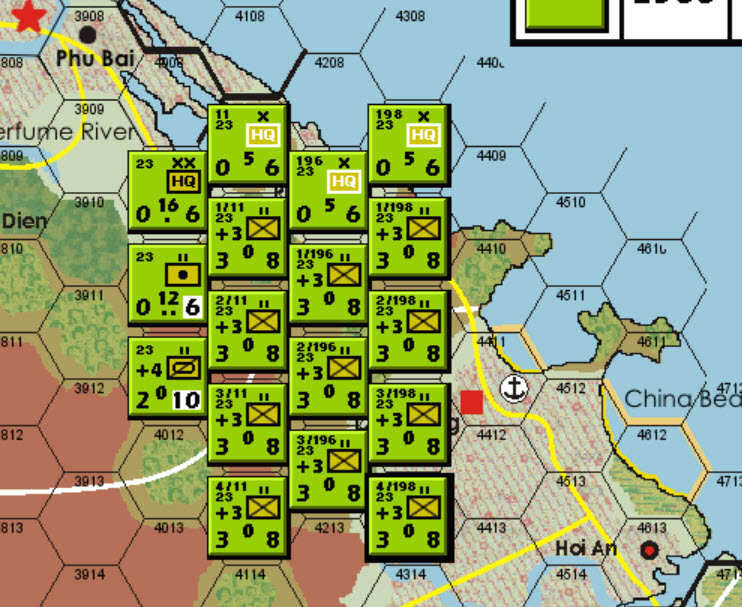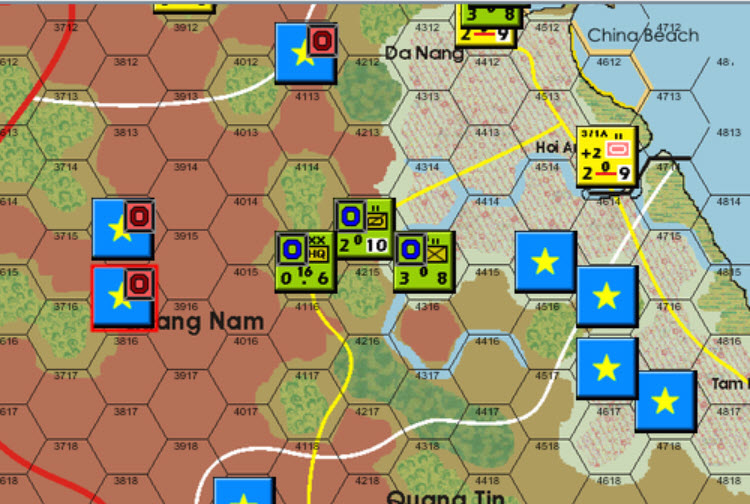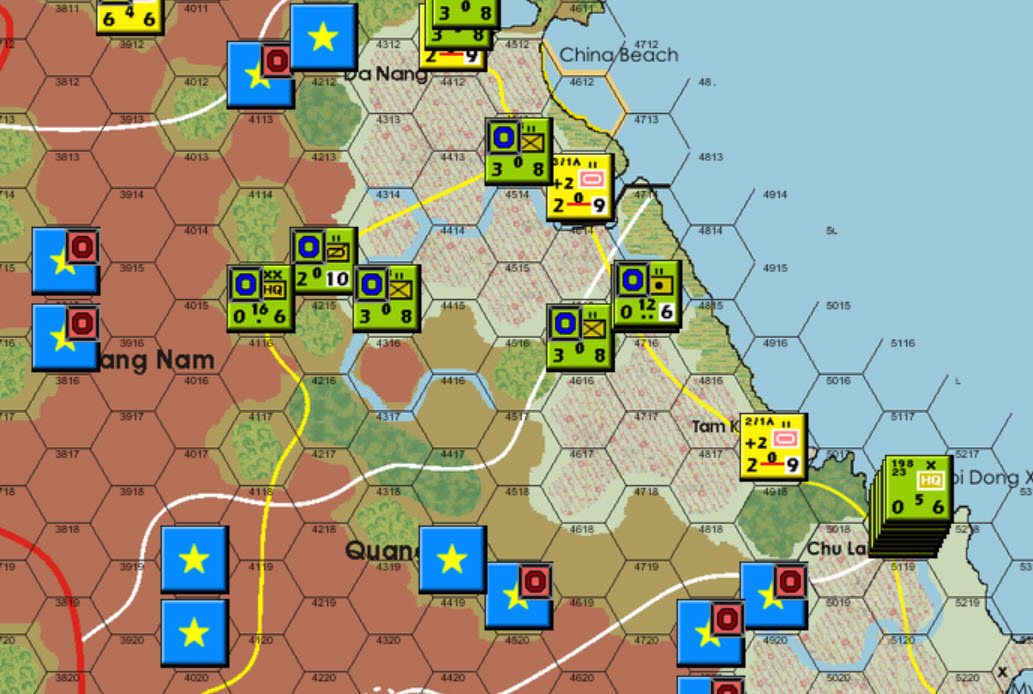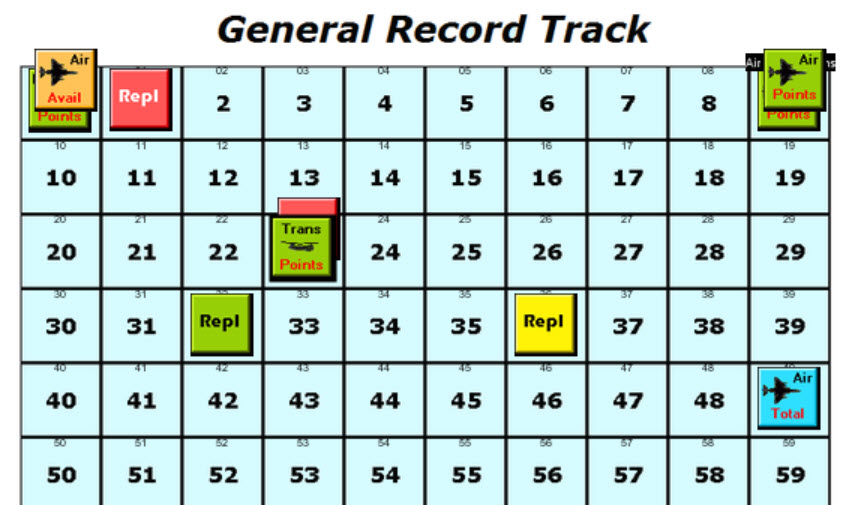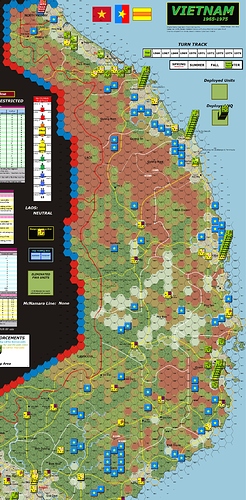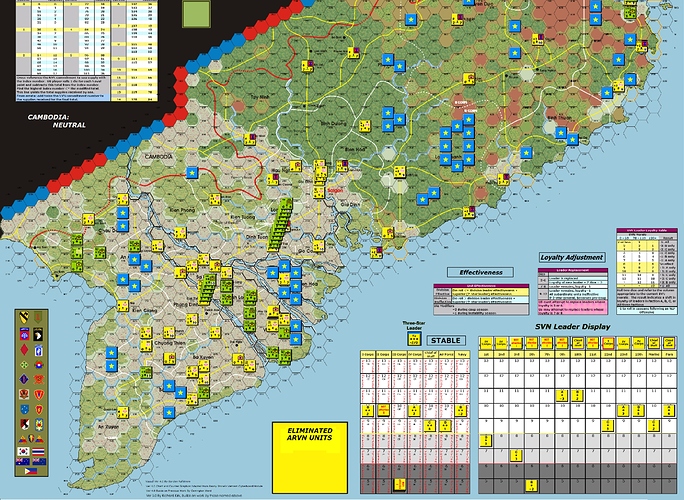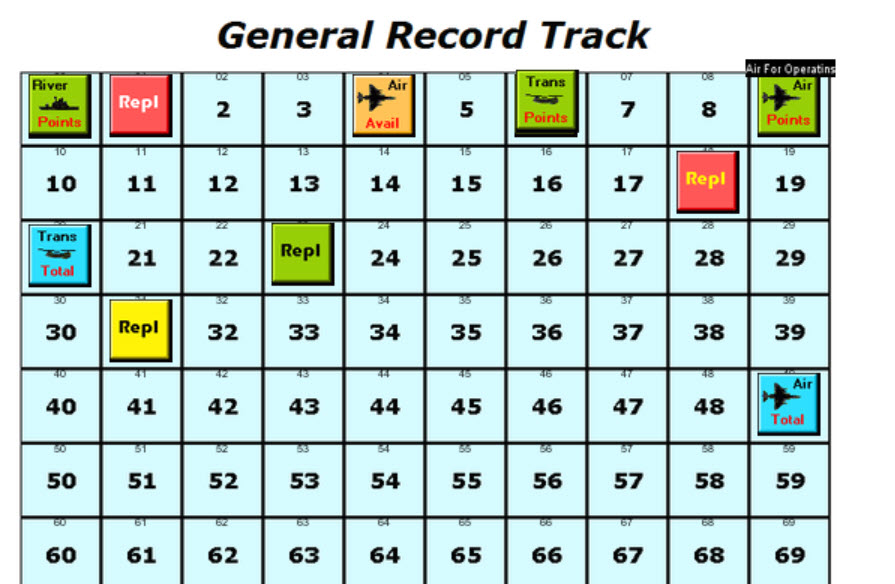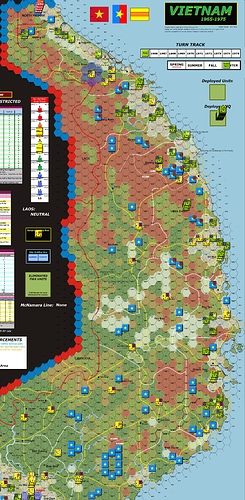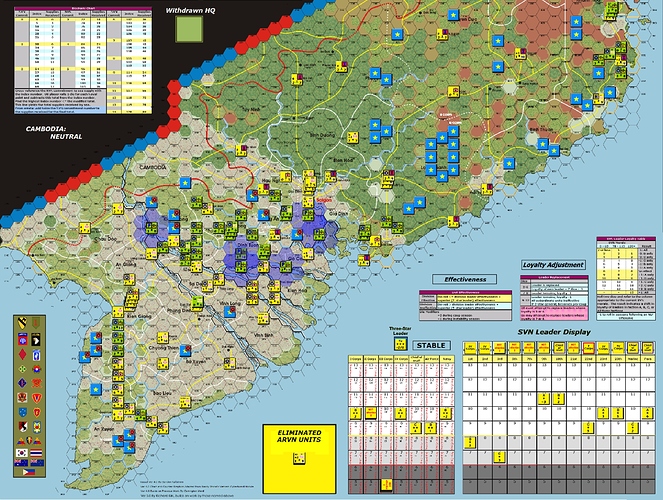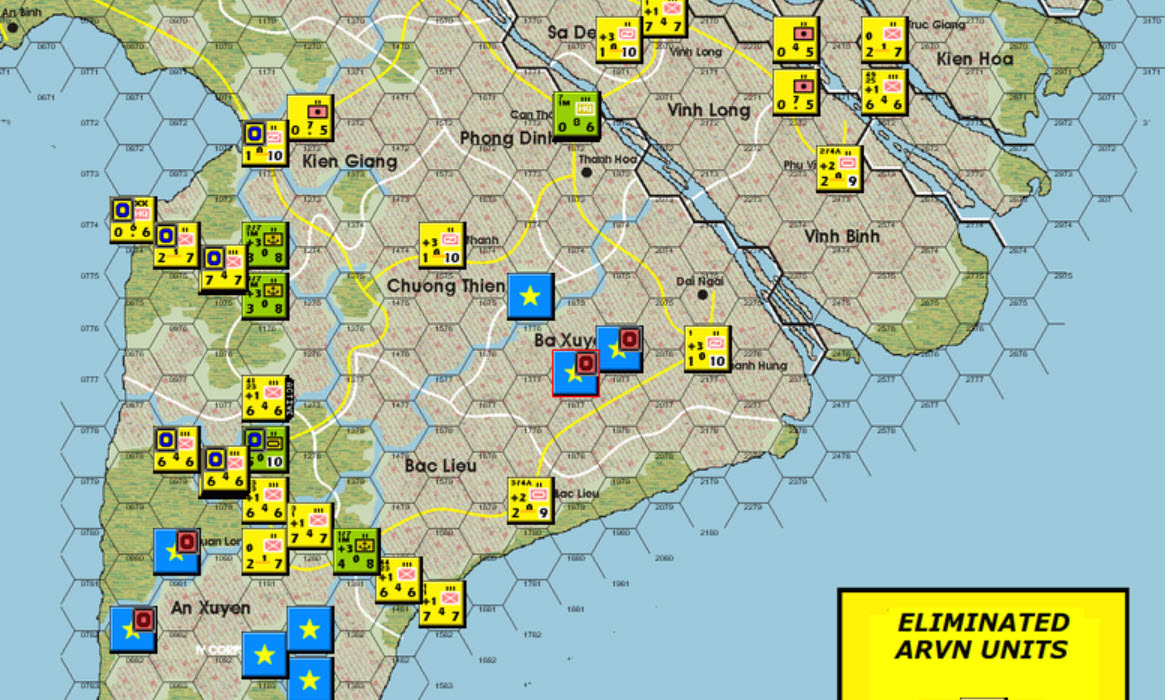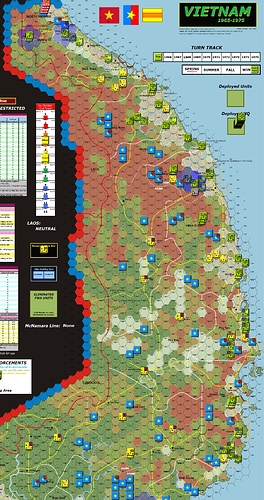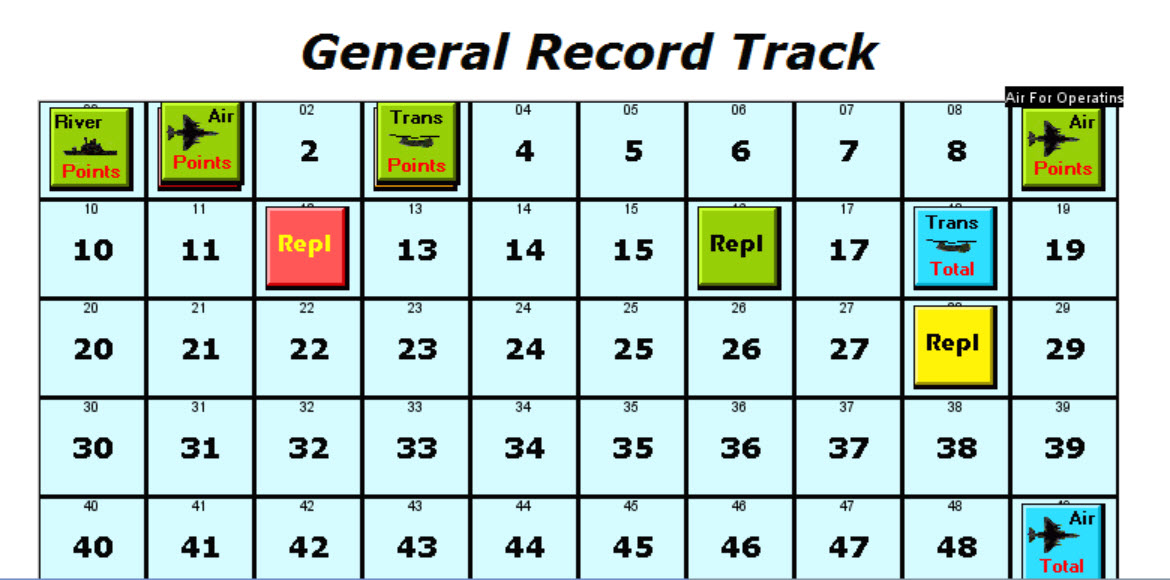So how long do you think this thing is gonna take?
At our pace? Probably 4-5 months. Maybe a little less. Average 2 sessions a week, say four hour sessions. Sometimes more, sometimes less of each.
Sweet, cool with that!
Uptight (Everything’s Alright)
Vietnam 1965-1975
1965 Winter Narrative, Interphase Exposition and Winter Interphase Resolution
“I’m a poor man’s son from across the railroad tracks. The only shirt I own is hangin’ on my back. But I’m the envy of every single guy, since I’m the apple of my girl’s eye.”
Put on your best dancing shoes, get a drink (I recommend hard, not soft), and then please hit play before reading and turn to the maximum volume your brain or household will allow.
Stevie Wonder. “Uptight (Everything’s Alright)”. Written by Stevie Wonder, Sylvia Moy, Henry Cosby. Music by The Funk Brothers. Tamla. Released November 22, 1965. In the Billboard 100 all through the Winter, finally reaching Number 3 in February. Stayed at the top of the R & B charts for five weeks. The song won Wonder his first two career Grammy Award nominations for Best R&B Song and Best Male R&B Vocal Performance.
The Secretary of Defense
Robert Strange McNamara was born in San Francisco, California in 1916 to second-generation hardscrabble Irish Americans, struggling to stay in the middle class they had just entered. His intellectual brilliance was recognized at a young age and he also became an Eagle Scout before graduating High School. He attended UC Berkley, graduating with a BA in Economics, followed by an MBA at Harvard, all by the age of 22. After this, he worked at Price Waterhouse in San Francisco for a year and then returned to Harvard in 1940 at age 24 to teach accounting in the business school and became the highest paid and youngest assistant professor at that time. During World War 2 he attained the rank of Lieutenant Colonel and was awarded the Legion of Merit while serving in the United States Army Air Forces (USAAF). His major responsibility was the analysis of US bombing efforts against Japan, focusing on enhancing efficiency and effectiveness, especially the B-29 forces commanded by Major General Curtis LeMay in India, China, and the Mariana Islands. McNamara was considered, at age 29 at the War’s end, in 1945, to be a genius, and an expert in the burgeoning field of Statistical Analysis.
In 1946 McNamara along with group of officers from his USAAF Statistical Control operation were hired to help Ford Motor Company reform its money-losing and chaotic administration through modern planning, organization and management methodologies. The "Whiz Kids", led by McNamara, had helped Ford make a complete turn-around by the mid-1950s and McNamara was rewarded in 1960 by becoming the first President of Ford Motor Company from outside the Ford family.
McNamara was President of Ford for all of three months, when he was selected by the new President-Elect, John F. Kennedy, to be the Secretary of Defense in 1961. McNamara relied on Defense Whiz Kids (many of whom were World War Two Statistical Board alumni along with McNamara) who had helped found and worked for the RAND Corporation in the 1950s,. Under McNamara’s stewardship they were responsible for the institution of systems analysis in public policy, which developed into the discipline known today as policy analysis. They consolidated intelligence and logistics functions of the Department into two centralized agencies, streamlined its purchasing and administrative practices, implemented massive cost reductions from the consolidation of programs from different services, believing that the redundancy created waste and unnecessary spending. McNamara was highly regarded in the Kennedy Administration advising the President on wide range of issues beyond national security, including business and economic matters. He was a principal adviser on steps taken during the Cuban Missile Crisis and on the need to remove Diem from power in South Vietnam.
Rand Corporation and Vietnam
The Rand Corporation, the first public/private partnership “Think Tank” had been tasked with multiple studies regarding the conflict in South Vietnam dating back to 1963; studies on the Strategic Hamlet program, the effectiveness of counterinsurgency programs, Viet Cong Recruitment and Morale, provincial population control levels, the effectiveness of aid and education programs in reducing Viet Cong influence, and many, many more studies.
Data would be collected from many points: US and ARVN Military reports and intelligence sources, USAID program personnel and records, State Department personnel and reports, information from Viet Cong defectors now in the Chiêu Hồi Program, interrogations of captured Viet Cong Prisoners, South Vietnamese government reports and records.
By 1965 these myriad data points would be collated in Saigon and processed, by former RAND and Defense staffer, and current State Department employee Daniel Ellsberg, and sent back to RAND Headquarters in Santa Monica, California.
At RAND the data would be processed, turned into punchcards, and fed into several of the many IBM 7094 II Scientific/Research mainframes there, the latest in cutting edge computing, and statistical trends and probabilities determined for various metrics in South Vietnam which interested the Department of Defense and MACV. On November 17, Secretary McNamara was in receipt of one particular report, which he found troubling.
Statistical Analysis indicated that as of September 1, 1965 approximately 9,333,333 of South Vietnam’s estimated 16,000,000 inhabitants lived under government control. Approximately 6,666,666 of its inhabitants lived under NLF control. That number had been trending downward. However, as of November 10, given current trends in South Vietnam, it was possible that by December 1 that number could climb, worst case, to 7,244,444, an increase of nearly 10%. That number was an outlier in the multiple statistical models run, though the median of the models was determined to be an NLF increase of 355,555. The median outliers were determined to be, at worst, 488,888.
McNamara and Lodge Arrive in Vietnam
Secretary McNamara travelled to Vietnam on November 22, accompanied by new US Ambassador Henry Cabot Lodge Jr., now beginning his second tenure as Ambassador after the resignation of now former Ambassador Taylor for health and family reasons. They were accompanied by former Attorney General and now US Senator from New York, Robert F. Kennedy, visiting the country on a fact-finding tour (and irritating President Johnson). The trip by the Secretary was ostensibly to visit US Troops on Thanksgiving, and to take a tour firsthand to view the progress made, but the Secretary wanted to discuss the troubling new trends with MACV Commander General Abrams.
The report’s internals indicated that the greatest impact to a sharp decline in Government controlled population lay in the NLF presence in the populous Annamite Coastal Plain from south of Da Nang to approximately Phan Rang in Binh Thuan Province. If uncontested, as it was at present, this decline could gain momentum and conceivably achieve a downward spiral, possibly an irretrievable one, from which the Republic of Vietnam may not be able to recover from. The Central Intelligence Agency concurred with the report’s warnings. General Abrams current plan for force increases, based upon the Band Sapphire option of Operation Freedom Partner, currently called for the deployment of the I Marine Amphibious Force (1st Marine Division) from Camp Pendleton, California to IV Corps in December, where it would transition responsibility for Partner and Overwatch operations with the 101 Airborne (Air Assault) Division, leaving that Division to change it’s Base of Operations to Cam Ranh Bay in Southern II Corps. As well, the 1st Cavalry Division (Airmobile) was to arrive in Qui Nonh in early December, and Abrams was confident that these divisions, along with the 173rd Airborne Brigade (Separate), already in Cam Ranh Bay/Nha Trang, conducting Defensive Operations, could handle this threat.
A Change in Plans
The Americal Division was now finishing training at Scofield Barracks in Hawaii after forming at Fort Irwin California, where the active duty 196th Light Infantry Brigade had joined the US Army Reserve 2 Brigade/63 Infantry Division (reservists from California, activated in May). The 1st and 3rd Brigades of the 63rd Infantry Division had only recently been activated and continued to organize and train at Fort Irwin while the 196th and 2/63rd joined the 11th Infantry Brigade in Hawaii for final preparations for Division-level operations before departing for South Vietnam, where it was to deploy to Da Nang in March 1966. McNamara urged Abrams to consider deploying the Americal immediately in early December to aid in reducing the NLF presence along the coast as soon as possible. Abrams was receptive but expressed concerns regarding the Division’s readiness. McNamara assured him that General Johnson was satisfied the Division could be deployed immediately. Abrams also requested that US Covert Reconnaissance Operations be continued off North Vietnam’s coast, and emphasized the ineffectiveness of US and South Vietnamese Navy patrols to interdict NLF Sea Supply infiltration, hampering his efforts to wrap up clearing operations in IV Corps, as well as contributing to the NLF problem in the Annamite Coastal Plain. McNamara agreed to this and suggested that US Navy efforts off the Coast of South Vietnam should be redoubled. He interceded with the President, who reluctantly approved, but re-emphasized that the unrestrained bombing of the North must be halted in Spring, as he wanted to attempt to reduce tensions with the Chinese and to at least offer to extend a hand to the North Vietnamese to begin negotiations to end their aggression.
In South Vietnam’s Provinces
The downward trend in the provinces continued to favor the communists but overall, though the downward trend continued, a USAID and CIA estimate released December 2, 1965 indicated that the population under government control likely had fallen by 176,000 in the Fall, a decrease of 1%. MACV, USAID and the Agency had increasing confidence that the increase in nation-wide morale due to aid programs and the increasing US presence, the clearing of occupied capitals and the disruption of VC efforts in the Mekong Delta would stop, and likely reverse this trend by year’s end.
Strategic War
Interdiction of several convoys bound for the Trail were successful as well as bridges at intersections 2, 17 and 21. However, crew reports indicate POL and industrial infrastructure targets continue to be dispersed by NVN. As well, Air Defense sites appear to be under construction. Strikes have reached a limit of effectiveness given available means.
Cable from COMUS2NDAIRDIV to CINCPAC to November 30, 1965.
The 2nd Air Division and Task Force 77 launch nearly all available bombers against targets in North Vietnam. The Haiphong Railyards and Port were hit particularly hard again, as was Vinh’s seaport and industrial center and the city of Đồng Hới, targeting depots thought to house supplies headed south via sea and the Trail, respectively. The strikes were determined to be of limited effectiveness in degrading capabilities given the force applied, as continued North Vietnamese efforts to disperse vital POL stocks to smaller, hidden locations. Several Air Defense sites, of Chinese manufacture, and possibly Chinese-manned appeared in Haiphong, Vinh and at Trail entrance hubs. As well, the Trail was interdicted, with the Nape Pass and the Mụ Giạ Pass as primary targets. There were no aircraft losses and the strikes were determined to be a success.
Protests Subside But Continue
The tapering of commitment of new US Forces to South Vietnam in the Fall and the muted response to Bombing efforts seemed to temper US public reaction against US Involvement in Vietnam in the Winter. On December 4 there was an anti-war demonstration in Washington, D.C. on Pennsylvania Avenue, at which Carl Oglesby, the new president of a mainly midwestern student organization called Students for a Democratic Society (SDS), made a speech, addressed to the liberal crowd, and in circuitous terms alleged that the United States government was imperialist in nature. The speech received a standing ovation and major press coverage on the three major US Networks.
Sea Infiltration Persistent
The suspension of US covert activities off the coast of North Vietnam hampered US interdiction efforts greatly. CIA estimates indicated that supplies by sea reaching South Vietnam may have reached a new high, estimating that more than 1,300 tons may have been received by PLAF logistics units in South Vietnam via the ocean route.
South Vietnamese Politics
Prime Minister Ky and President Thieu met with Secretary McNamara and newly-arrived Ambassador Lodge in December. Prompted by General Abrams, they both requested the removal of III Corps Commander Lieutenant General Nguyen Bao Tri and Nguyen Huu Co, the 5th Division Commander. The Prime Minister and President demurred on these requests and each was a patron of one of the Generals (Ky of Thi and Thieu of Co). McNamara, concerned with other issues, didn’t press the matter. The impact of the Fall’s USAID program deliveries and personnel, combined with the tangential economic boost and direct military effects of the increasing US Military presence in the country boosted South Vietnam’s morale, according to provincial USAID advisers.
North Vietnamese Politics
In Hanoi, the continued bombings of the North and the successes of the move to the Revolutionary War strategy increased the Politburo’s overall resolve to continue to increase its military commitment to the conflict, and more Soviet and Chinese aid was promised to be forthcoming. However, the latter tapered a bit, as the lower US force increases in the Fall caused the Soviets to reduce aid.
US Arrivals and ARVN Formations
In South Vietnam, on December 1, 1965 the US 1st Marine Division arrived in IV Corps: the bulk of the Division and the United States Army 2/31 FA Battalion of 155mm Howitzers arriving in My Tho and the 7th Regiment and the Divisional Armor Battalion arriving in Cần Thơ. The 6/16, 2/12 8/12 Field Artillery Battalions of 155mms were withdrawn from IV Corps to Okinawa for refurbishment and reorganization. On December 3, the bulk of the 1st Cavalry Division (Airmobile) arrived in Qui Nonh, and the 3rd Brigade, accompanied by the 5/42 FA Battalion of 155mm Howitzers, arrived in Nha Trang. On December 7 the Americal arrived in Da Nang and Chu Lai. The 196th Light Infantry Brigade, a Battalion of the 2/63rd Infantry (now reflagged as the 198th Light Infantry Brigade), the Divisional Armored Cavalry Squadron and the Divisional Headquarters, with 3 dedicated Battalions of 155mm Artillery, landed in Da Nang. The 11th Infantry Brigade, the remainder of the 198th and the Divisional Artillery Battalion of 175mm guns landed at Chu Lai. As well, three USAF squadrons of F-105Ds and 4 replacement battalions of US Army troops arrived in Bien Hoa., along with 6 Aviation Battalions of UH-1D and CH-47 Helicopters. Equipment arrived in country to outfit 16 ARVN Battalions-worth of replacement cadres. Operation Market Time was substantially reinforced. In early November, seventeen Point-class cutters were loaded as deck cargo on merchant ships in multiple US ports and dispatched to U.S. Naval Base Subic Bay. At Subic Bay each cutter was armed with an 81 mm mortar and five .50 caliber M2 Browning machine guns. They were organized into Division Eleven operating out of An Thoi with eight cutters and Division Twelve operating out of Da Nang with nine cutters and staffed by Navy Crews which had been trained for this purpose. As well, each Division was assigned 25 fast patrol craft (PCFs) or Swifts and provided aviation support.
NLF Reactions
The Viet Cong appeared to increase its presence in II and III corps overall, especially the Annamite Coastal Plain and the II/III Corps Seam, while also reinforcing the area around Long Khanh Province. The NLF appeared eager to continue to harassment and ambush tactics after the limited pacification gains of Fall 1965.
Do Numbers Decide?
As Abrams escorted McNamara to Bien Hoa for his departure back to Washington, he had a question for the Secretary. “Sir, we’ve made moves and sped up our timetable, based on a worst-case scenario that the numbers indicated was possible. And then that worst case didn’t happen. We could have headed off a problem here, but what if all these numbers, you know, they don’t add up? Should they be making the decisions? What if they aren’t right?” McNamara stared back at him, uncomprehendingly, as if Abrams was speaking in a foreign language. Because to the Secretary, he was speaking a foreign tongue. McNamara replied, “General, numbers never lie.”
Interphase Resolution (and Exposition)
Please take a deep breath, get up, stretch, hit play before reading and turn to the coolest, punchiest volume your brain or household will allow.
The Beatles. “Nowhere Man”. Parlophone. Released December 3, 1965. Peaked at Number 3 on the Billboard 100 in January 1966. Also, on the album Rubber Soul .
I & II Corps at Interphase Start.
III & IV Corps at Interphase Start.
Vital Statistics
Recordkeeping Phase (an ongoing Process)
Pacification Phase
So this pacification phase troubled me. Haunted me. Worried me. Greatly. It troubled me so much I ran a statistical model, going through Pacification and resolving it 10 times. These were the results:
Model 1 - -8
Model 2 - -7
Model 3 - -11
Model 4- - -5
Model 5 - -2
Model 6- - -8
Model 7- - -2
Model 8- - -6
Model 9- - -13
Model 10- - -6
Average: -6.8
Outliers: -2, -13.
Top 3 Outliers, average: -3, -11
The 13 really scared me. I had at that point resolved to bring in 50 Commitment for Winter. I was already leaning that way, but this made me decide to send three US Divisions.
Final result?
-4 . I got lucky. But I don’t bet on luck.
Strategic War Phase
A. Mission Declaration Segment: I declare what I want to bomb, North Vietnam (Restrained or Unrestrained) and/or the Trail and how many Air Points I allocate. I allocate 22 of my 31 to Pound the North Unrestrained and Unflinchingly. Essen, baby. I allocate 8 against the trail. Just like last turn. This is a war, not a Rand Study.
B. Strategic Bombing Segment: Still no NVN Air Defense built. A Trail Improvement has been made so his optimal is now the “5” box. Rolled a 1 for 22 Air Points conducting Unrestrained Bombing of the North. You take the number of Air Points and cross reference to the Row that corresponds with it given the low (‘0”) NVN Air Defense Levels at present. That’s row 10. I rolled a 1. Row 11. I had a 50% shot at 2 and a 50% shot at 3 Commitment destroyed. I am glad I guaranteed a minimum of 2. 2 NVN Commitment lost. Then I rolled a 1d6/2 (rounded down) +1 for its harm to US Morale. Rolled a 2/2=1+1, -1 Morale. No losses when Curt rolled again to see if I lost any Air Points. SVN Morale gets boosted +4 to 86. Then I roll for 8 Air points against the Trail (which is fragile, 1 hit, and he goes from 10 supplies per commitment point to 9 per). I am on Row 5. Whatever I roll will do 1. I hit the Trail, degrading it. Curt Rolls again, no losses.
C. Blockade Segment: 7 NVN Commitment was sent. That puts him on row 107. I have squadduch, nada, nuttin (choices). So that is a base 42 Supplies for him, =x2 the base commitment sent, (14) = 56 Sea Supplies. All that was a copy/paste from last season Sea Supply is killing me. That is gonna change.
D. Trail Status Segment: Status is one below optimal. Dinged.
Politics Phase
A. SVN Officer Replacement Segment: I must attempt to Mr. Incompetent and Absolutely Disloyal in III Corps. I fail on a 9. He grows more Disloyal and will be pro-Coup and pouts ineffectively with all his Corps assets. I try to replace the crappy 5th Division Commander and roll a 9. He grows more disloyal and his (1 Armored Cav Squadron) Division are ineffective. He goes, one way or another, next Season.
B. Coup Determination Segment: You roll 2d6 and compare it to the Two Star Loyalties. If the roll is less than their loyalty, they are Loyal. Same as their Loyalty, they are Wavering. Greater than their loyalty, they are Pro-Coup.
If there are more Pro-Coup Leaders than Loyal Leaders, there is a Coup. The Three Star gets put back in the Three Star pull and a new one is randomly pulled (it could be the same guy). The loyalty of every Loyal Two-Star Leader goes down by one. The US takes a -3 Morale hit and the SVN take a -8 Morale hit. Coups are bad.
If the Wavering and Pro-Coup Leaders combined are equal to the Loyal Leaders, the Government is Unstable. The US takes a -1 Morale hit and the SVN take a -3 morale hit. Unstable sucks.
If the Loyal Leaders Outnumber Wavering and Pro-Coup Leaders combined, the government is Stable. Lower the Loyalty of Pro-Coup Two Star Leaders by 1.
I rolled a “6”! Yay! I guess the ARVN is happy with the support the US is putting behind them. Mr. III Corps keeps his title of Mr. Incompetent and Absolutely Disloyal.
C. SVN Morale Adjustment Segment: You implement and calculate all the Morale adjustments for the SVN first. I am at 86 (up 4 from the Unrestrained Bombing of the North). -2 for KY and -1 for Population level and then a decent +5 for the 20% of new US Commitment last Season 23, 4.6 rounded up). 88 morale. This is good. But I still don’t feel Coup/Unstable-proof level.
Leader Loyalty Adjustment Roll-Now I roll on this table to see what wackiness happens with the ARVN Factions:
I roll, a 8! The A Faction all get +1 loyalty! Happy with Ky, sticking up for Mr. Incompetent and Absolutely Disloyal (who happens to be an “A” faction guy) and all the resolve the US is showing this year. Great! 2 Good Division Commanders and the IV Corps Commander, all valuable go up. The poor A Division Commander will get a Staff job (get his 1 Armored Cav Squadron withdrawn) next Season I am a little more coup-proof, my number now is a solid 9.
D. US Morale Segment: we already went down to 506 from 508 because of the Strategic Bombing. Now we are: -2 for US New Commitment of 16-25. -2 total. US Morale 504. Notice I missed an extra -1 by staying below 100 Commitment last Season.
E. NVN Morale Adjustment Segment: They go from 33 to (+5 if Morale below 40, because they are dedicated communist revolutionaries who know an absolute controlled press, labor camps for “Unsocialist behavior” and daily struggle sessions never hurt nobody), +6 for US Commitment 75-100 (see, another modifier I tamped down a bit by staying short of 100 last season), and +5 (like SVN) for US New Commitment last season. New Morale, 49.
Recruitment Phase
A. US, ARVN and FWA Placement and Withdrawal Segment
Withdrawals come before Placements. Anything Withdrawn can’t be placed that same segment.
US
US Withdrawals
3 155mm (6/16, 2/12 8/12) (-3C)
US Placements
1 Marine Division (My Tho and Can Tho) (9C)
1st Air Cavalry Division (Qui Nonh) (9C)
2 155 mm Howitzers (Qui Nonh) (2C)
23rd Americal Infantry Division (Da Nang and Chu Lai) (11C)
2 Naval Points (8C)
7 ARVN Supplies (1C)
12 Airmobile Points (6C)
12 Replacement Points (4C)
9 Air Points (3C)
ARVN
Withdrawals:
None
Builds:
1 Left Over, +1C for 7 = 8 Supply.
ARVN Draft at 64.
12 Replacement Points (3P/6S)
Cost: (3P/6S).
End: ARVN Draft – 67, 1 Supply.
B. NVA and VC Placement: Curt places a lot of stuff I can’t see. What I do see are 4 PAVN (NVA) Artillery Battalions built in the Northernmost part of the trail (that’s where they get built). Ten bucks says they are going to move on map into North Vietnam. Curt finally increases the NVN Air Defenses as well.
C. Infiltration Segment: That is where they go. The duel begins…
D. Offensive Declaration Segment: Costs 10 NVN Commitment and can only occur if US Commitment is 150 or higher. We’re not there yet.
Curt sends file to me, I start a Vlog to record one roll to complete this diary entry.
Unit Status Phase
A. US Organizational Segment: I can alter my Brigades’ deployment Profile if all elements are stacked together. I do not.
B. ARVN Effectiveness Roll: I roll 1d6 On the below table and compare with my current Leaders. This is the big enchilada, who can do what for the next two loooong game turns of Winter ’65 for the ARVN.
Also, I have to roll less than or equal to a Corps commander’s rating +3 or all those independent Battalions in his Corps area are Ineffective. Ineffective means they basically can’t move and do nothing all Season.
I roll a 4. I’ll take it. Only II and III corps units (no one but Corps Assets at present) ineffective. All my Divisions in I and IV and under the Chief of Staff units are effective.
Vital Stats at Interphase End
Support at Interphase End
I and II Corps at End of Interphase. Note Curt’s subtle increase in II Corps, sprinkling the coast Border in III Corps. The NVA Artillery begins a whole new world of fun for both of us. The US has arrived in on the ground in force. Next turn will be interesting.
III and IV Corps at End of Interphase. Two powerful US Divisions and a lot of firepower is in IV Corps. There will be ops.
“Doesn’t have a point of view. Knows not where he’s going to. Isn’t he a bit like you and me?”
Next: What will Winter Bring? Will IV Corps finally be cleared? What about the Coastal Plain? Will the NLF run or fight?
By the way, if anyone has any questions about the game or the narrative: rules, why who did what, what’s happening in the History, stuff about the music, really anything, feel free. It won’t disturb or “clutter” anything, and the initial post will be updated with bookmark quick links from time to time. I’m happy for this to be an interactive, discursive experience. If I wanted this diary chiseled on impenetrable stone, I would have blogged it. Talking about stuff here, well, it’s fun.
Holy shit the arrogance on that McNamara guy! Didnt he know statistics are only as good as the data you have?
I would venture to say that he is confident in the systems he has in place to capture the data. He’s certainly found his methodologies to be air-tight for about 20 years, and they have proved very successful in multiple endeavors. Why would they fail him now?
Which is borne out by the fact that the US won.
During ww2, statisticians had several significant victories over traditional military intelligence- one of the more famous examples is the old German Tank problem, which produced a much more accurate result than traditional intelligence estimates.
California Dreamin’
Vietnam 1965-1975
Winter 1965 Narrative, Operations Exposition and Winter Operations Resolution
“I’ve been for a walk on a winter’s day. I’d be safe and warm If I was in L.A. California dreamin’ on such a winter’s day”
Take a breath, Chillax, and then please hit play before reading and turn to the maximum volume your brain or household will allow.
The Mamas and the Papas. “California Dreamin’.“ Written by John Phillips, Michelle Phillips. Dunhill Records. Music Performed by The Wrecking Crew. Released December 8, 1965. On the Billboard 100 all Winter of 1965-66, peaking at Number Four in the first week of March.
Military Assistance Command, Vietnam: Command, Staff and Major Subordinate Commanders
By December 1965, the core formations of Operation Freedom Partner were now in place under the aegis of Military Assistance Command, Vietnam (MACV).
General Creighton Abrams
General Creighton Abrams was born and raised in Springfield, Massachusetts, he was the son of Nellie Louise (Randall) and Creighton Abrams, a railroad worker. He graduated from the United States Military Academy in 1936, served with the 1st Cavalry Division until 1940, when he transferred to the Armor Branch, and became an officer in the newly formed 1st Armored Division. His combat duty during the Second World War consisted of service with the 4th Armored Division in General Patton’s Third Army. As the Commander of the 37th Tank Battalion, Abrams was at the vanguard of the Cobra Breakout from the Normandy Beachhead and in the front of Patton’s drive through France in 1944. He was awarded the Distinguished Service Cross for extraordinary heroism on September 20 and December 26, 1944. The former after the Battle of Arracourt and the latter for the relief of the besieged 101st Airborne Division at Bastogne during the Battle of the Bulge. General George Patton said of him: “I’m supposed to be the best tank commander in the Army, but I have one peer — Abe Abrams. He’s the world champion.” He joined the Korean War late in the conflict and successively served as chief of staff of the I, X, and IX Corps in Korea. He was in Germany as the assistant division commander of 3rd Armored Division and then commanded the division upon his promotion to major general, all during the Berlin and Cuban Missile Crises. He was transferred to the Pentagon as deputy Chief of Staff for Operations then was promoted to lieutenant general and commanded V Corps in Europe before being selected as Commander, MACV.
MACV J-3, Operations Officer
Major General Jonathan Owen Seaman was born in Manila, Philippines in 1911. He was appointed to the United States Military Academy, graduating with the class of 1934. By 1942 he was a major and battalion commander in the 4th Field Artillery regiment. He served in World War II in both European and Pacific theaters. From 1953 to 1954, he commanded the 30th Field Artillery Group at Yorkhof Kaserne, Germany. Noted as a brilliant Operations mind, Seaman was hand-picked by Abrams to be his J-3 when he was named MACV Commander.
Commander, US 101st Airborne Division (Air Assault)
Major General Beverly E. Powell was born in 1912 on a small farm in Henderson, Kentucky and graduated from the United States Military Academy in 1936. In WWII, he took a FA Battalion into North Africa. He crossed into Italy and drove north eventually becoming LTG Patton’s G-1. He served several staff and command tours in Korea and with NATO. He Assumed Command of the 101st Airborne in 1964
Commander, 1st Cavalry Division (Airmobile)

Major General Harry William Osborne Kinnard II was born in Dallas, Texas in 1915 and graduated from the United States Military Academy in 1939. He notably served with the 101st Airborne Division in the Second World War, parachuting into Normandy on D-Day was awarded the Distinguished Service Cross for his heroism during Operation Market Garden. He was also credited with providing the Assistant Division Commander of the 101st with the answer to the German demand for surrender at Bastogne. He then held multiple command and staff assignments before helping to develop the airmobile concept, by which troops would be flown into battle by helicopter. He was able to develop this approach while commanding the 11th Air Assault Division (Test) at Fort Benning in 1963. This unit evolved into the First Cavalry Division (Airmobile). He has been Command of this division, effectively, since 1963.
Commander, 1st Marine Division
Major General Lewis J. Fields was born on October 1, 1909, at Delmar, Maryland, and later attended a high school in Crisfield, Maryland, in 1927. He subsequently enrolled at St. John’s College at Annapolis, Maryland and graduated with Bachelor of Arts degree in Mathematics on June 3, 1931. During his junior high school years, Fields entered the Maryland National Guard and served continuously with that organization until January 1932. He struggled to find a job during Great Depression, but decided to enlist the Marine Corps in January 1932, hoping to obtain a commission. He received one in 1936 and went on to serve in the Second World War on Guadalcanal, notably at the Battle of Edson’s Ridge. He later participated in the Battle of Cape Gloucester. This was followed by Multiple NATO assignments, including several member country advisory tours, a staff assignment in Korea, and multiple staff and plans assignments before he assumed command of the 1st Marine Division in August 1965.
Commander, 23rd Infantry Division (Americal)
Major General Frederick Carlton Weyand as born in Arbuckle, California in 1916. He was commissioned a second lieutenant in the United States Army through ROTC program at the University of California at Berkeley, where he graduated in May 1938. He graduated from the Command and General Staff College at Fort Leavenworth in 1942 and served as adjutant of the Harbor Defense Command in San Francisco from 1942 to 1943. He moved on to the Office of the Chief of Intelligence for the US War Department General Staff in 1944. He became assistant chief of staff for intelligence in the China-Burma-India Theater from 1944 to 1945. Weyand graduated from the US Army Infantry School in 1950. He became commander of the 1st Battalion, 7th Infantry Regiment and the assistant chief of staff, G–3, of the 3d Infantry Division during the Korean War from 1950 to 1951. He then graduated from the Army War College, moving on to command the 3d Battalion, 6th Infantry Regiment, in Europe. He served in the Office of the United States Commander in Berlin in 1960 then became chief of staff for the Communications Zone, United States Army, Europe from 1960 to 1961. During this time in Germany, he became well-acquainted with General Abrams. He then served as the deputy chief and chief of legislative liaison for the Department of the Army from 1961 to 1964.
He was assigned as the Division Commander of the 25th Infantry Division in Hawaii in 1964, but was personally picked by General Harold K. Johnson, the Army Chief of Staff (who knew him well in Korea and in the early 60s in DC), to command the 23rd Infantry Division in May 1965 when it was forming and being readied for deployment to Vietnam. Weyand’s command of the Division is one of the factors which eased General Abrams’ mind regarding this Division’s early deployment to South Vietnam.
Country-Wide Operations
December 1965 arrived in South Vietnam and with it three US Divisions; one Airmobile, one Light Infantry and one Marine. The Concept of Operations for MACV in South Vietnam entered its second stage; country-wide operations. In IV Corps US and ARVN Forces would expend maximum effort against the NLF, as the 1st Marine Division moved into position to relieve the 101st Airborne Division, which in the words of Peter Arnett of the Associated Press, were given orders to “Kill it’s way out of IV Corps,” and rebase to the vicinity of Binh Thuan Province along the Coast at the Southern end of II Corps. Simultaneously, the 1st Cavalry Division (Airmobile) would conduct operations from its arrival ports of Qui Nonh and Nha Trang in II Corps in conjunction with the 173rd Airborne Brigade (Separate) already operating north and south of Nha Trang and the ARVN Airborne Division, operating in the vicinity of Qui Nonh. These operations were intended to deny the NLF access to the populous agricultural areas along the coasts of Binh Dinh, Phu Yen and Khanh Hoa provinces. Finally, the 23rd Infantry Division (Americal) would conduct operations from it’s arrival ports in Da Nang and Chu Lai intended to deny the NLF access to the coastal agricultural areas of Quang Nam, Quang Tin and Quang Ngai Provinces.
Operation Eindhoven, Operation Moonlight, and Operation Thần Phong (Spirit Style)
In IV Corps the 101st Airborne Division (Air Assault), the 1st Marine Division and the ARVN 1, 23 and 25 Divisions began a set of operations: Operation Eindhoven, Operation Moonlight, and Operation Thần Phong (Spirit Style).
For Operation Moonlight, the Marines would move south and west of their entry ports at My Tho and Can Tho and attempt to engage and destroy NLF Units fleeing West ward and Southward into IV Corps, in partner with the ARVN Divisions, who would be complimenting this with Operation Thần Phong (Spirit Style), establishing a cordon and also engaging NLF units in an attempt to constrict communist-held areas and destroy pockets of the enemy. The Marines would primarily be conducting ground or Airmobile operations to enhance their mobility in the Delta. The 101st Airborne Division would move Eastward, out of IV Corps, in a series of Search and Destroy operations, targeting and destroying NLF units in pockets in Northern and Central IV Corps, reaching its new base areas in Binh Thuan by the end of February.
These Operations were largely successful and accounted for most of the NLF units rendered incapable of operations in the Winter, as the concentrated use of overwhelming force and firepower had the NLF largely fleeing Allied formations. A cordon of the Ca Mau Peninsula was purposely opened in the second phase of these operations to allow “kill corridors” to be formed where fleeing NLF forces could be targeted and destroyed, while attempting to escape, rather than have Allied units venture too far Southward and find themselves out of position for operations in the Spring of 1966.
Operations Iron Soldiers and Cold Steel
The 1st Cavalry Division (Airmobile) launched two Season-long operations in Winter. The first was Operation Iron Soldiers, a combination of the nicknames of the 1st Brigade, 1st Cavalry-“Iron Horse”- and the 173rd Airborne Brigade (Separate) – “Sky Soldiers”, who conducted a series of Search and Destroy Operations emanating out of Nha Trang intended to deny the NLF freedom of movement in the coastal populated regions of Khanh Hoa and Phu Yen Provinces. These efforts were somewhat successful, resulting in the NLF abandoning the coast for mountainous terrain inland, however no NLF units were eliminated and US forces suffered 104 dead and wounded in these operations. This area of operations was planned to be handed over to the 101st Airborne in early 1966, allowing the two Brigades to commence operations at that time with the rest of the 1st Cavalry Division.
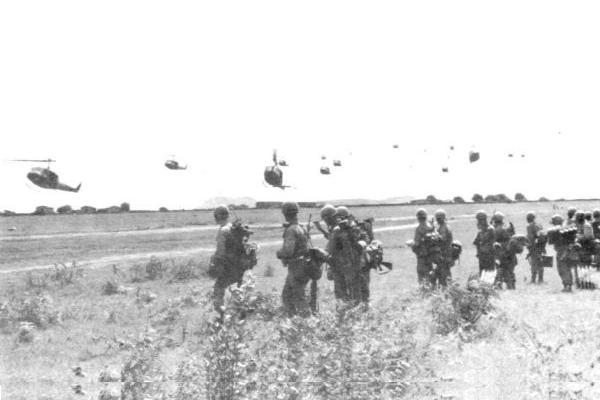
Operation Cold Steel/Thép Lạnh (Cold Steel) was a combined series of operations conducted by the ARVN Airborne Division and the 1st and 2nd Brigades of the 1st Cavalry, along with the Divisional Headquarter elements. These operations were intended to eliminate the NLF presence along the coast of Binh Dinh Province. During Operation Cold Steel II, 3 NLF Provincial Battalions were destroyed and the NLF withdrew to the Coastal Mountain range, leaving the agricultural areas.
Operation Bougainville
On December 31, the Americal Division launched Operation Bougainville from its arrival ports in Da Nang and Chu Lai with the intent of eliminating all NLF units in the coastal populated areas of Quang Nam, Quang Tin and Quang Ngai provinces in I Corps. Notable in these operations was Bougainville I, II and V, which resulted in the destruction of three NLF Provincial Battalions, the PLAF 5th Division Headquarters and approximately 2,000 Enemy Killed in Action (EKIA) at the cost of 150 US and 300 ARVN Casualties (Killed and wounded).
Bougainville I opened on December 31 with the movement of the Americal Divisional Headquarters and Artillery 50 miles South-Southwest of Da Nag on National Route 19 via Airmobile Movement. The Divisional Armored Cavalry then moved via National Routes 1 and 19 South and then Southwest, moving 5 miles Northwest of the Unknown NLF unit that was the target of the operation. The California Reservists of the 4/198th Brigade then moved overland Southwest of Da Nang and moved into close contact with the enemy. After a Sharp engagement in which the 2 Divisional Battalions of 155mm Artillery of the Americal played a decisive role in providing interdicting fire and ground support, the enemy 3 Quang Nam Provincial Battalion was overrun and destroyed on January 2, 1966.
Bougainville II launched on January 7, with the 196 Brigade Headquarters moving from Da Nang, South on National Route 1 to a position 20 miles South-Southeast of Hoi An in Quang Nam province. Here it was joined by the Divisional Artillery Battalion of 175mm Artillery, and Firebase Alameda was established. The 1/196 Brigade then moved overland from Da Nang into close contact with the 19th PLAF Battalion, in rice paddies 20 Miles South-Southeast of Hoi An. A sharp skirmish was fought, resulting in 42 US Casualties and an unknown number of EKIA. The NLF then retreated 5 miles South, deeper into cultivated land, but the Battalion attacked again on January 12, having tactical advantage and with the full support of the 175mms. The PLAF Battalion was destroyed, at the cost of 4 US Casualties. At this point, the NLF began to make a general retreat towards the Annamite range.
On February 11, Bougainville V was launched involving a battalion of each of the 196 Brigade, the 11th Brigade and the Reservists of the 198th Brigade, along with the Americal Divisional 175mms, and the Headquarter Artillery Support elements of the 19th and 11th Brigades, targeting a known NLF position containing the 9th PLAF Battalion and the PLAF 8th Divisional Headquarters. After a 3-day battle in the mountains 30 miles West Southwest of Quang Ngai City, the Battalion and the Headquarters were destroyed, at the cost of 37 US Casualties.
Overall the Operations in I and II Corps, especially those of the Americal were deemed successful, and MG Weyand won praise from the press for his Division’s operations that Winter (and some said, the spotlight was on him because of the presence of Reservists in the Division). Though Bougainville claimed more enemy casualties, the NLF country-wide were forced to move inland, degrading enemy control of these heavily populated areas. Some NLF units infiltrated back, especially in Khanh Hoa Province, where the US presence was the lightest.
Gains, But A Lot of Work To Be Done

With the ending of February, the NLF had had its grip loosened along the Coast, and its presence nearly eradicated in IV Corps. USAID officials, CIA Analysts and MACV planners though, knew that gains in Population control by the government may not be seen without a persistent effort. Helicopter losses were an issue as a result of the intensive use of Airmobility in all operations, especially in IV Corps. A planned Riverine Naval reinforcement to the Marines there would alleviate that issue. As well, along the Annamite Coastal plain, the newly arrived divisions, now joined by the 101st Airborne, would have to redouble their efforts to completely push the NLF into the interior of South Vietnam, and eliminate all units and base areas on the Coastal Plain. As well, the NLF re-occupation of Con Thien and the appearance of PAVN Artillery there meant a unique solution might be required to handle the threat along the DMZ. “This was a good start,” Abrams told Major General Seaman, his MACV J3 Operations Officer, “But that’s all it is. A good start. We need to keep moving the ball, pushing the ball, down the field.”
Winter Operations Resolution (and Exposition)
Please hit play before reading and turn to the maximum volume your brain or household will allow.
Them. “It’s All Over Now, Baby Blue.” Written by Bob Dylan. Released January 21, 1966.
The Operations Sequence
“When eating an elephant take one bite at a time” – General Creighton Abrams
What is the Operations Sequence?
For the Season’s Operations, you do this twice, in two Game Turns.
1 – Support Phase -Self Explanatory. The US player make sure all Air, Airmobile, and Riverine Points are all accurate and reflected properly on the record tracker.
2 – Special Operations Designation Phase: US Player indicates all units on Hold or Patrol. Then the NLF Player does the same. “Hold” doubles the combat and support strength of a unit for defense, for the Game Turn, but makes the unit ineligible for any other operations that Game Turn. Units on Hold also have no Zone of Control – ZoC (ZoCs inhibit enemy movement). “Patrol” doubles the ZoC effect of the Unit on Patrol; it really inhibits enemy movement. Any units that do either are Operations Complete (OC) for the rest of the turn. The only units that can’t patrol are ARVN Battalions and Headquarters (also, they have no ZOC). Everyone can go on Hold. ARVN Ineffective units can do nothing at all except Strategic Movement the whole Season). Note that either player can also place any unit(s) on Hold or Patrol later in the Operations Phase.
3 – Strategic Movement Phase: The US Player (only) may conduct Security Operations, Strategic Movement and/or Naval Movement with any of his units. The US Player may also conduct Security Operations, Strategic Movement and/or Naval Movement later on in the Operations Phase. The NLF Player may conduct Strategic Movement later on in the Operations Phase (the NLF cannot do Security Operations or Naval Movement). Ineffective ARVN Units may only conduct Strategic Movement and may only do so in this Phase.
4 – Operations Phase – This is the Heart of the Game Turn. First, the NLF decides who is going to Operate. Then the Operating player may do any of the operations outlined above, as well as:
Search and Destroy Operation (both Players): Basically, movement and then Attack by designated Units.
Clear and Secure Operation (US Player Only): A Search and Destroy, sacrificing some mobility, where the units can end the Operation on Hold or Patrol, at his choice.
Bombardment: US Air Points, US Naval Units or either players’ Artillery Units (that have not moved) may bombard an enemy unit.
Offensive Reserves (US Player Only): Units may join a Search and Destroy or Clear and Secure Operation already in progress.
Defensive Reserves (US Player Only): Units may join the defense against an NLF Search and Destroy Operation already in progress.
Note - any operation could conceivable have all that side’s units and all its support allocated to it. If a Player wants to do that. Your only limit is yourself.
5 – Game Turn Indication Phase: This is Just the End of the Game Turn. This occurs when the NLF Player Declines to Operate, the US Player Declines, and the NLF Player Declines again. Theoretically, every single Unit on Map May conduct/participate in any of the above before this occurs, but they do not have to. If it is only Game Turn One, you go back to the top there and do it all over again for Game Turn Two. When that ends, that ends the Season.
Artillery and What it Can Do for You!
Artillery and its effective use in Operations may be the most important thing a US Player needs to know when playing this game, but its use is just as Vital for the NLF player, because well, it’s the only Firepower he has, and he needs to understand its use (and implications on his operations) as well. This Season, we’ll deeply explore Artillery in the game and then spotlight some operational examples that really display its use.
There are three types of Artillery in the game: Organic, Dedicated and Independent. All have their strengths and weaknesses. Below is an example of all types.
Organic: You’ll see up there the ARVN and PAVN (NV)A Divisional regiments. They have Organic Artillery in each Regiment, 2 in each PAVN Regiment and 4 in each ARVN Regiment. Organic Artillery has a range of 1 (the adjacent hex). It can be used offensively if that unit is activated for an operation and can aid the defense of that unit only, but an unlimited amount of times (theoretically) if that unit is attacked. Pretty simple.
Dedicated: You’ll see the PAVN Divisional HQ has artillery with a strength of 6 and a range of 2 (the dot means it can fire, maximum over 1 intervening hex). The ARVN Divisional HQ is identical. Each of the US Brigade HQs has an Arty Strength of 5 with a range of adjacent (simulating 105mms). As well, the Americal (23rd Division) is special and has a Divisional HQ which has 16 (!!??) Arty Strength and a range of two. The Division also has 175mms (marked “23” with a strength of 12). All those units may fire an unlimited number of times offensively if they are in range of a target hex and a subordinate unit in its command structure is activated for an operation. Defensively, Dedicated Artillery may fire an unlimited number of times if they are in range of a target hex in which a subordinate unit in its command is being attacked. Either occurs regardless if the Dedicated Artillery has operated already or not.
Dedicated on the Offensive: This is pertinent and has some permutations. This means, for instance, that the ARVN or NVA Divisional Artillery could fire on our little sandbox three times in three separate operations. A US Division (the Americal/23rd in particular) has many more options. Each Brigade HQ may fire, theoretically, 3 or 4 times if each battalion was activated in an operation (as 2 of those brigades have 4 battalions). The two dedicated Divisional Artillery platforms may fire up to 12 (??!!) times, theoretically, given that there are 11 Infantry battalions in its 3 Brigades and one Armored Cavalry Squadron (Squadron is “Cavalry-ese” for a Battalion) in the Divisional Command Structure. This really shows the power of dedicated artillery for all Offensive Operations, and the hidden utility of using multi-divisional (or brigade) units in operations. Using one Battalion of the 23rd in a Search and Destroy operation and then units from other Divisions (as an example) makes Dedicated Artillery a force multiplier, if the Artillery is positioned with foresight to enable future operations. Of course, an experienced NLF Player knows this. Often, the mere movement of a US Headquarters within range of multiple NLF units is enough to get the units to begin a retrograde movement out of the area. Our Operational Example later will show a case in point of this effect.
Independent: The US Artillery Unit (on “Hold” in the sandbox) is an Independent Artillery Unit. It is in no Command structure. The ARVN and NVA Independent Artillery perform identically. It may only fire Offensively if activated for an operation. Defensively, Independent Artillery may fire an unlimited number of times if they are in range of a target hex in which any friendly unit on their side is being attacked. Nationality (example ARVN or US) or Force Affiliation (VC or NVA) doesn’t matter, the artillery can fire defensively in support of all friendly units. This occurs regardless if the Independent Artillery has operated already or not. Independent Artillery are limited somewhat (compared to Dedicated) on the offensive but invaluable on the Defense. The NVA have some, but the US and ARVN can deploy/build many, many such units.
Artillery on Hold: A note on Artillery placed on Hold. They lose the ability to be activated or moved and their Artillery Strength is only doubled in defense of the hex they are in. However, all Offensive and Defensive support functions described above are still in effect (undoubled, of course).
Meet the Americal!
Pretty much my favorite US Division in the game. It brings the wood.
Operational Snapshot: Operation Bougainville I and follow on operations
Here we see I have activated the Americal Divisional HQ in Da Nang and Airmobilized it. I have also activated the Americal’s Cavalry Squadron and a Battalion of the 198th Brigade. The target is an UNK VC unit in Cultivated adjacent to Forested Hills, Mountains to the NW and SW (3 Movement Point cost to enter either but also a +1 for a minor river hexside you can’t really see there that separates the hex it is in from those features) and Mountains to the South, Hills (2 MP cost) to the SE, Cultivated (1 MP cost) to the NE, and Cultivated with a Minor River hexside (2 total MP cost) to the N. When he makes his alert roll it wil be 1d6 plus the cost of 1 for the terrain he is in. He is in a tough place. I move via Airmobile movement, placing the Divisional HQ 2 hexes due West of him on the road. He is in range. So are all the other VC units within 2 hexes of the HQ. I then move the Armored Cav Squadron to his Northwest. Any VC unit that was adjacent to the end of the Armored Cav unit’s move bugs out, using Reaction Movement well out of the HQ’s range. The 198th Battalion then walks into the hex, from Da Nang in the North (it was sent there with the 196th when deployed to South Vietnam). More reaction bug-outs. I interdict him for 2 MP’s using 14 of the Division’s 16 Artillery Strength.
He rolls a “3” for alert movement. +1 for being in Cultivated = a Net 4 Movement points for alert. It costs four to leave the hex (enemy unit in hex 2 MPs, another 2 for interdiction). He can’t leave, as he’d need a 5 to even get to due North in Cultivated where he’d still be attacked. He sees the error of his ways, reveals that he is a 2-0-6 VC Battalion and disperses, adding 2 Replacement points to the VC Replacement Pool, but eliminating that Battalion.
After this all the VC in the area in range of the Divisional HQ activate and move outta range. Inland. Off of the cultivated hexes. Where I want him to go. Threat moved them.
Later, in Bougainville II I do something similar with the Americal’s Dedicated 175mms and some other units.
Wow, look at that Province’s Cultivated areas just clear itself of Communist activity.
By Bougainville V in Turn 2 of Winter, we are officially at the “Get Off My Lawn!” stage. Down near Chu Lai. Most of the VC Units that are “ops Complete” will be destroyed and the rest run for the mountains.
Artillery! You had better understand it in Vietnam: 1965-1975.
Support at Start of Operations
I and II Corps at Beginning of Winter Operations.
III and IV Corps at Beginning of Winter Operations.
Operation Eindoven I
The 101st about to destroy a VC battalion and Divisional Headquarters before using it’s pursuit to exit IV Corps.
Commentary – IV Corps was largely swept of the enemy this Turn. The VC were (largely) forced to retreat from the Coast along the Annamite Coastal Plain. My operations will be less intensive there in Turn two, as I am more interested in keeping him out of the Cultivated areas for Pacification next Interphase.
Support at End of Winter Operations 1
I and II Corps at End of Winter Operations 1
III and IV Corps at End of Winter Operations 1
The Opened Cordon
I knew the NLF would make run for it out of the Southern Delta. I left a gap for them to walk into a kill zone; my object was to have there be no more than two VC units in any one province by the end of operations. A hallmark of Moonlight II/ Thần Phong II (Spirit Style II) and all intensive Combined US/ARVN Operations is the tactic of starting the operation as US only, not taking the +1 Alert Roll penalty for using ARVN, but then calling in ARVN as Offensive Reserves to continue the operation into multiple rounds, ensuring the kill as he runs.
Commentary – Things went well. IV Corps is in hand, and now I will continue to sweep the area with the Marines leading in making contact, and the ARVN cleaning up in the Spring. But I need Riverine Points and to replenish my Airmobile Points which I need in other parts of the Country. Along the Annamite Coastal Plain, I will likely build another ARVN Division next Interphase and start to eradicate the NLF Pockets in full earnest, now that I’ll have 3 US Divisions and one Brigade in place, most being Airmobile. The goal will be no live VC in any Coastal Province. Then I’ll need to contemplate the interior of II and III Corps.
I and II Corps at Winter Operations 2
III and IV Corps at End of Winter Operations II
Support at End of Season
Eliminated NLF Formations (The “Body Count”)
“Yonder stands your orphan with his gun, crying like a fire in the sun. Look out the saints are comin’ through! And it’s all over now, baby blue.”
Next: Will President Johnson stop bombing the North? What will Pacification indicate? What will the next stage of Operation Freedom Partner bring to South Vietnam? Will US Force levels increase?
By the way, if anyone has any questions about the game or the narrative: rules, why who did what, what’s happening in the History, stuff about the music, really anything, feel free. It won’t disturb or “clutter” anything, and the initial post will be updated with bookmark quick links from time to time. I’m happy for this to be an interactive, discursive experience. If I wanted this diary chiseled on impenetrable stone, I would have blogged it. Talking about stuff here, well, it’s fun.
Questions about the narrative. Why the focus on the US leadership and not the NVA/SVA?
This is possible the best thread on this forum for me. Just curious on the bias.
I actually have focused quite a bit on ARVN leadership in the Interphases, during politics. I likely will do much more of that like above as things progress, but all that requires narrative “table-setting”. My god, man, I’ve even included VIetnamese wiki links to salient personalities while discussing them! :). So a convenient time needs to appear to do for the ARVN what I did above.
While I have focused quite a bit in NVN politics on NLF/NVN senior leadership and strategic concepts, even though I am not Curt nor in his brain, so I have to speculate in my framing of the “why” of his decisions. Even my McNamara/Rand critique, if you think about it, is actually a self-critique. 😏
But regarding smaller unit leadership or expansive operational discourse regarding the NLF:
1.) NLF/NVN english language divisional/regimental leadership biographies are still spotty at best.
2.) I am the US/ARVN/FWA player. And I literally don’t know what he’s built or where his stuff is most of the time. :). In terms of Operational bias, I’ve dutifully reported every NLF offensive in detail (the first turn). But when he’s “Giapping”, there isn’t a lot to relate other than what I find and kill, observe, or what he does in Strategic, larger terms.
Does that answer things a bit?
And thanks, Cowboy.
I get you NG, for me as well, seems like the story (I’ve been told/read) is always about the US struggle and we don’t get to see the other side as much as we’d like to see that perspective. Of course all the stuff I saw on TV as a kid was fully US biased.
Anyway, still a fantastic read and I admire your time commitment to doing this…Freaking insane at best.
So that’s why after this one is done, @Navaronegun and his buddy will get to take a breather, then do the whole fucking thing again from the other side.
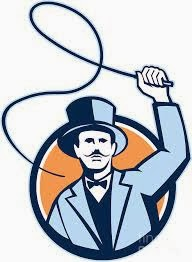
Announcement
This thread has not gone away. Curt and I are playing furiously. Sometimes, when writing something like this, in the form of a narrative alternate history, like you’d see in a book, momentous events occur. So to make the narrative coherent (and have proper foreshadowing, reflect the thinking on “both sides of the hill”, and generally cogently relate all the varied areas of the conflict and North Vietnamese, South Vietnamese, US and world reaction to the events) I’ve had to let the Spring Intephase for 1966, the Spring Operations for 1966, and the Summer Interphase for 1966 pass (we just completed the latter) before I can put metaphoric pen to paper and continue this at a level that I am comfortable with. There will be a new entry here soon, probably followed by another in fairly quick succession. As a consolation for my tardiness soon I will post a “1965 Musical Playlist” of Songs from that year that were considered for the narrative, but didn’t make the cut.
Cheers,
The Author
I am very jealous of your ability to write these.
I would like to purchase a metaphoric pen. I literally have a shitload of metaphoric ink. As well metaphoric paper. OTOH I believe that I am in am not literally real. I think my actual life is a metaphor. I am a figurative asshole.
HELP!
Hey at list you don’t have to write any literal literature, just metaphorically write some metaphors. You can do that, can’t you? I mean not literally do that of course…
Very happy that you will continue. For some time I thought my comments turned you away from posting your excellent story.
Damn! It WAS you! :)
